March 31, 2019
Martha O'Kennon
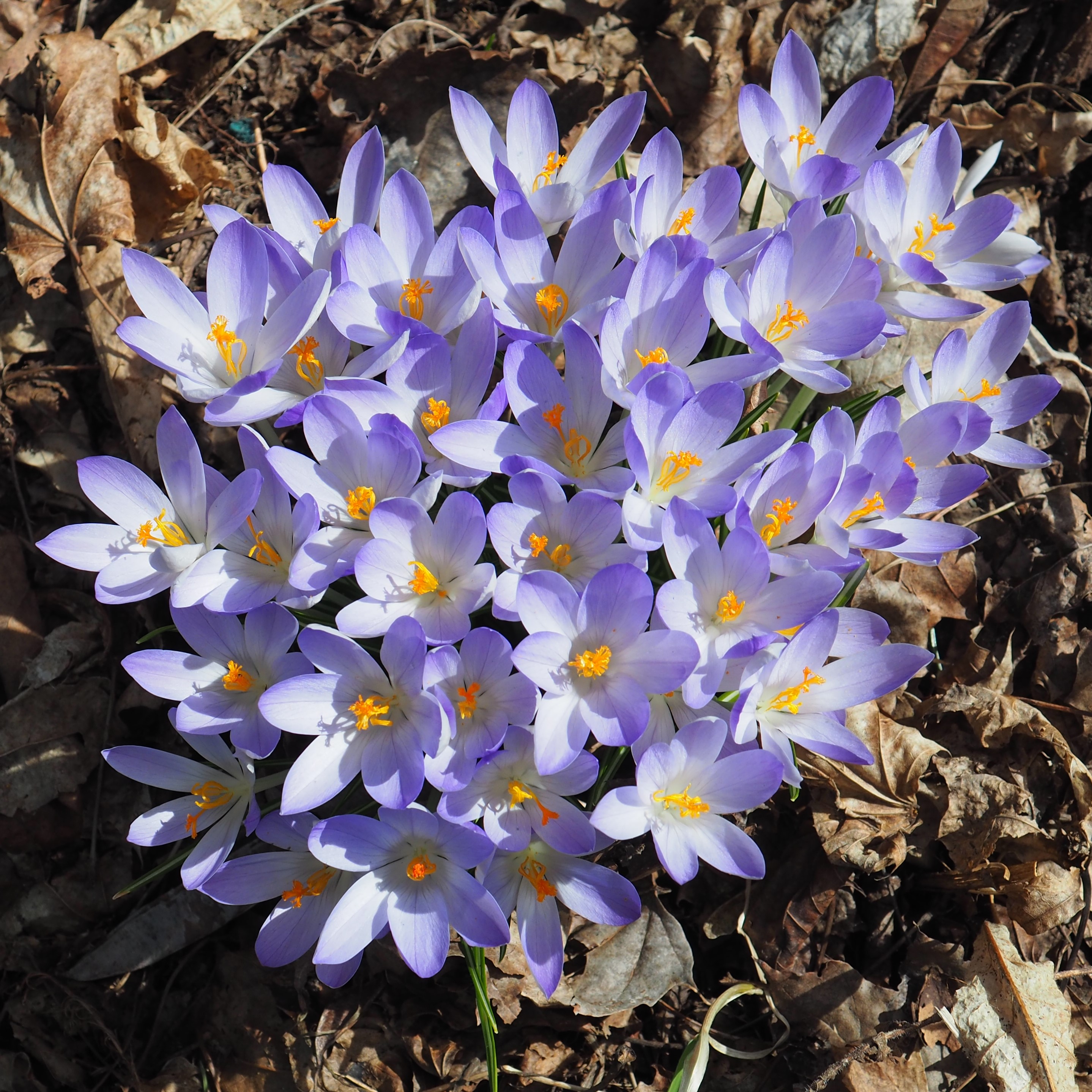


Two days in a row with 60F in the midafternoon! Things have progressed very much faster this week. The very early light purple crocuses are popping into a few lovely clusters. And now the darker purple crocuses are making their own large clumps. In the meantime, the winter aconites that we were so glad to see a few days ago are quickly going by (image 3).
Remember that there is information in the name of the file for each image. You can see it by mousing over the image - look at the lower left of the screen. Or you can click on the image to get to the (usually) larger image. Then the info is displayed in the address line above. Sometimes the second click will actually display a different view of the original image.
Finally some ants are coming out of the shadows. This big black ant is probably the Eastern Black Carpenter Ant even though I can't see the yellow hairs very well (probably a trick of too much light) on the abdomen. The shape of the one big segment in front of the abdomen looks right. Another ant, smaller with red arms, may be the Small Honey Ant, or, since it is very shiny, may also be a Smaller Carpenter Ant. I vote for the Small Honey Ant.
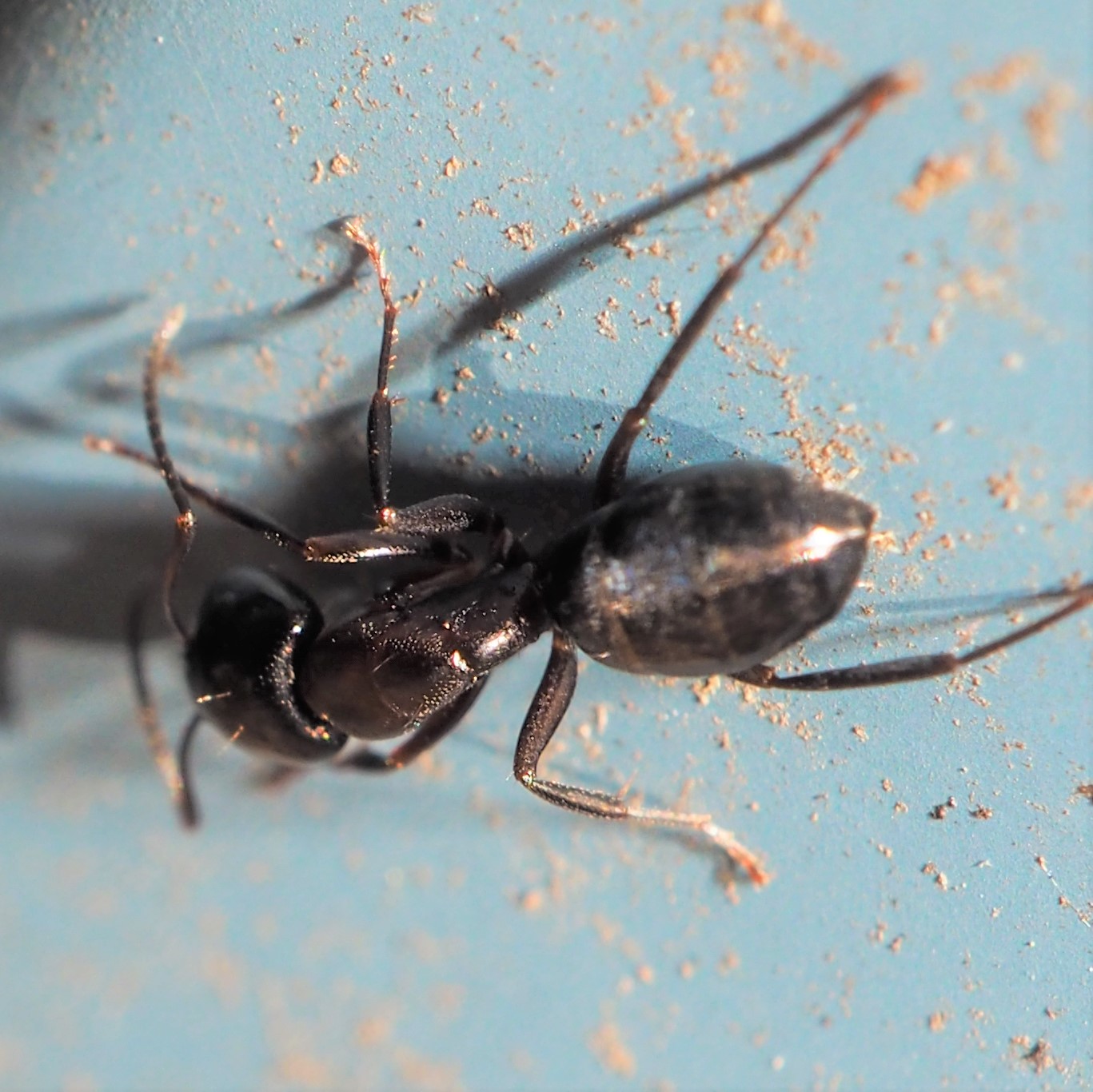
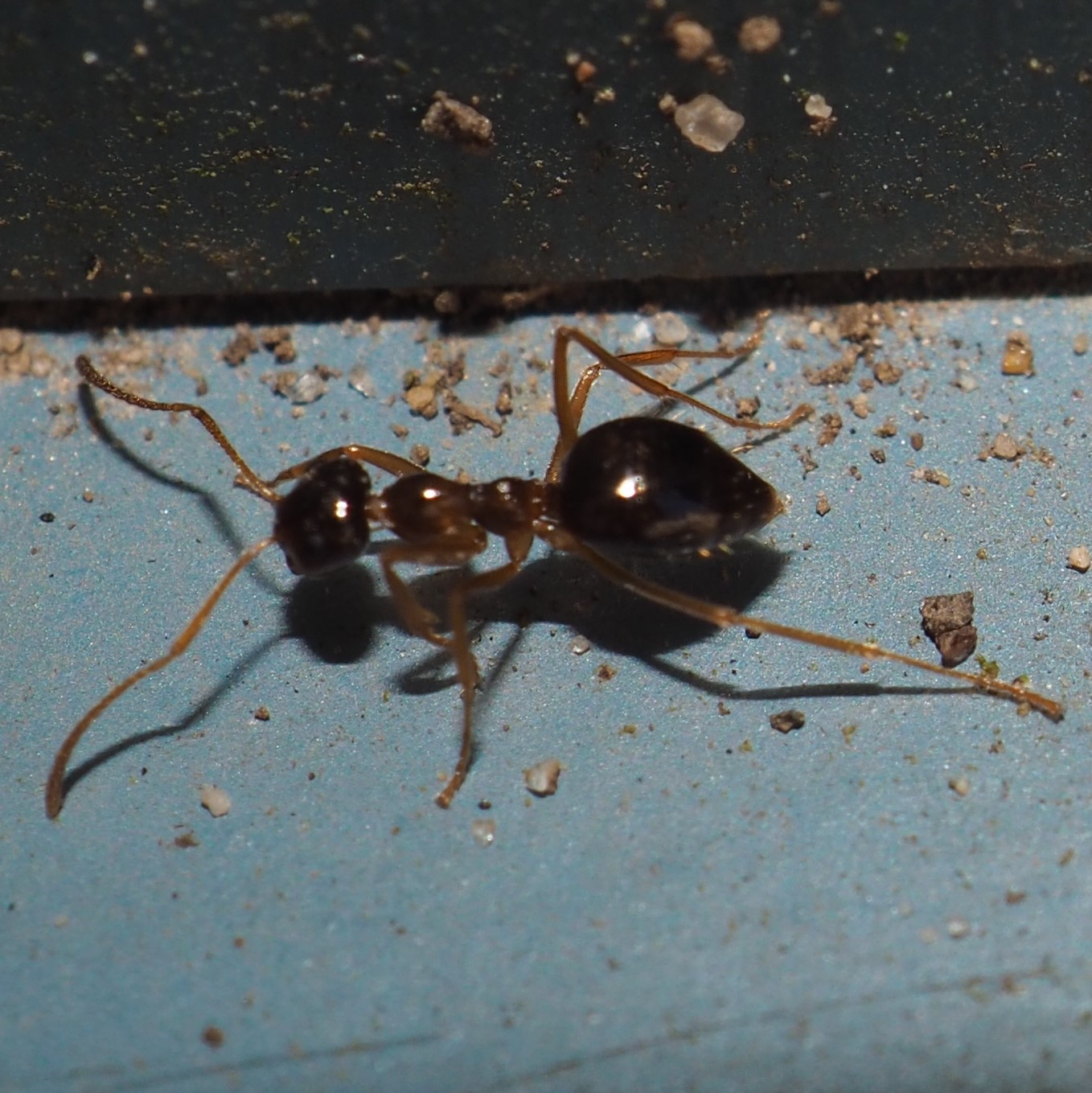
Looking for bees means another chance to look at the little spring flowers. Here is a winter aconite with a (western) Honey Bee; a new little bee, identified on iNat as "subgenus Osmia". Third is a more detailed shot of Osmia, the good witch. Doesn't it look like a kitten with wings?
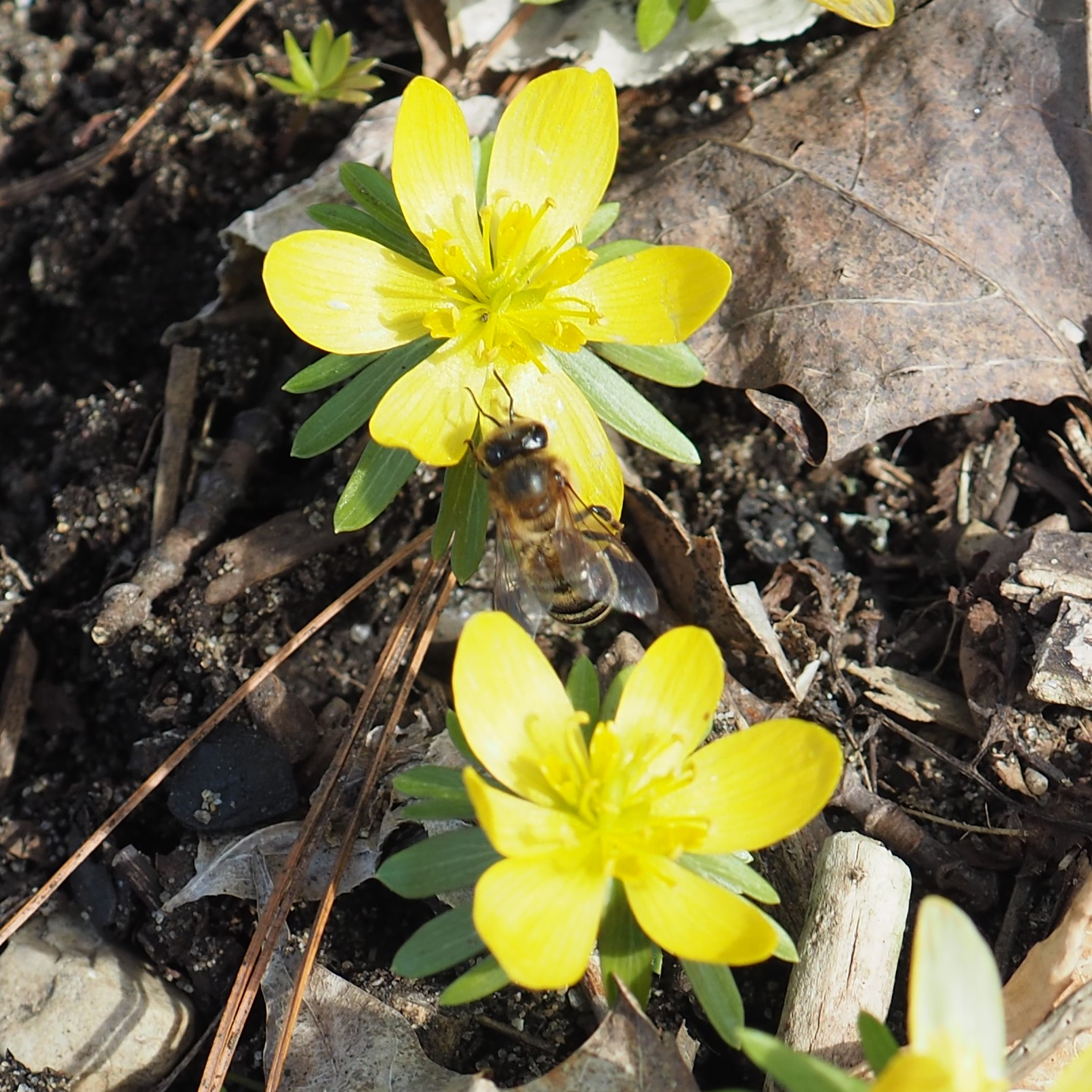
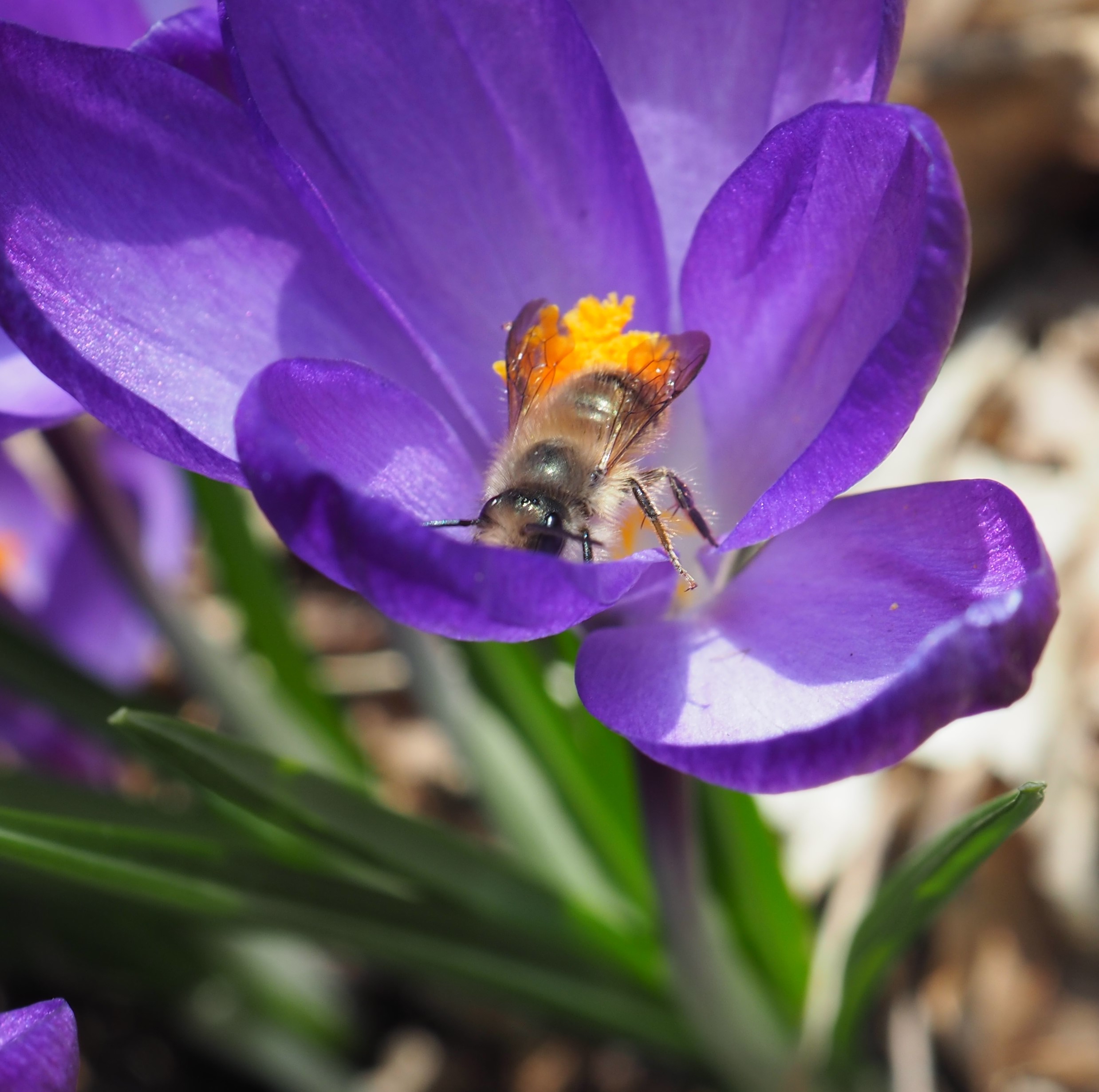
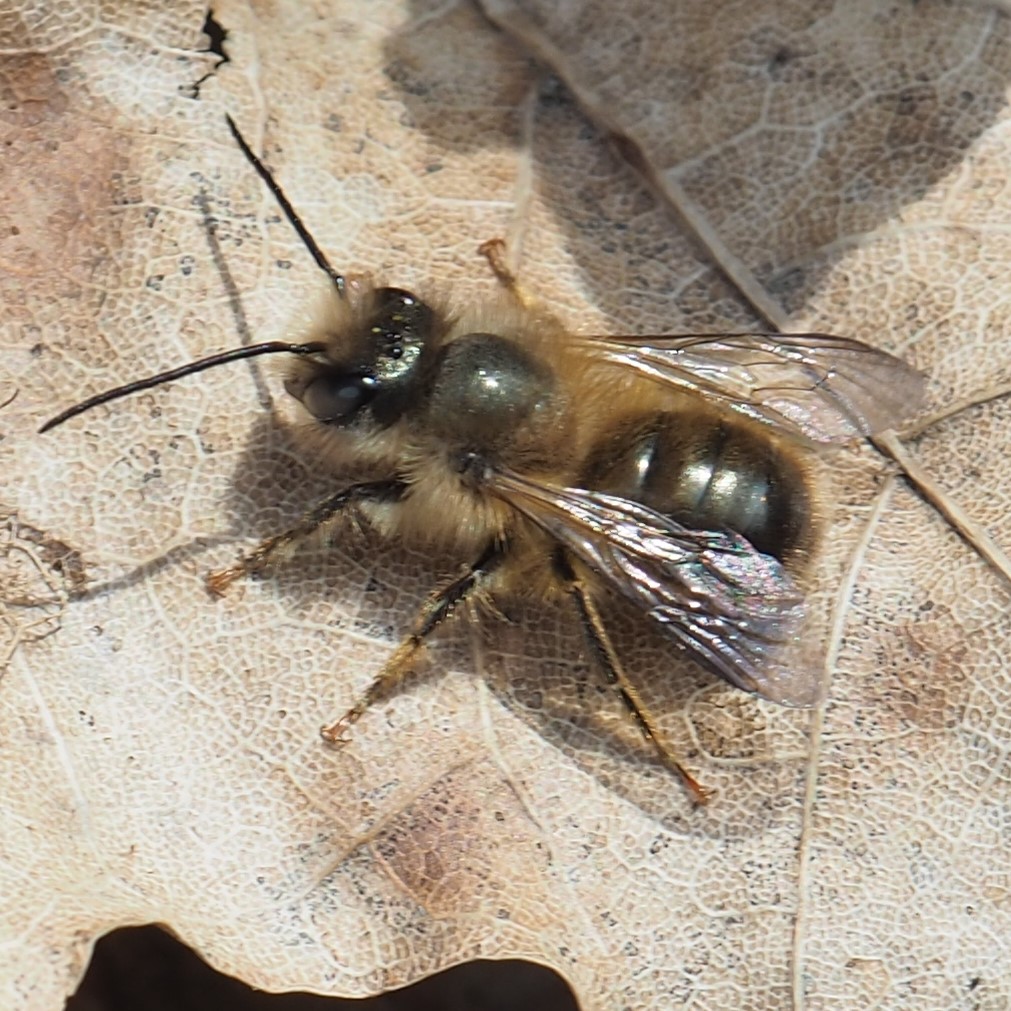
What? Beetles are coming back? We had a triumvirate this week: this little Rove Beetle (remember, they are the ones with shortened hard wings (elytra)); A tiny Scarab-type beetle - look at the cool antennae. Third is another Rove Beetle. Look how much soft wing is exposed by the shortened elytra.
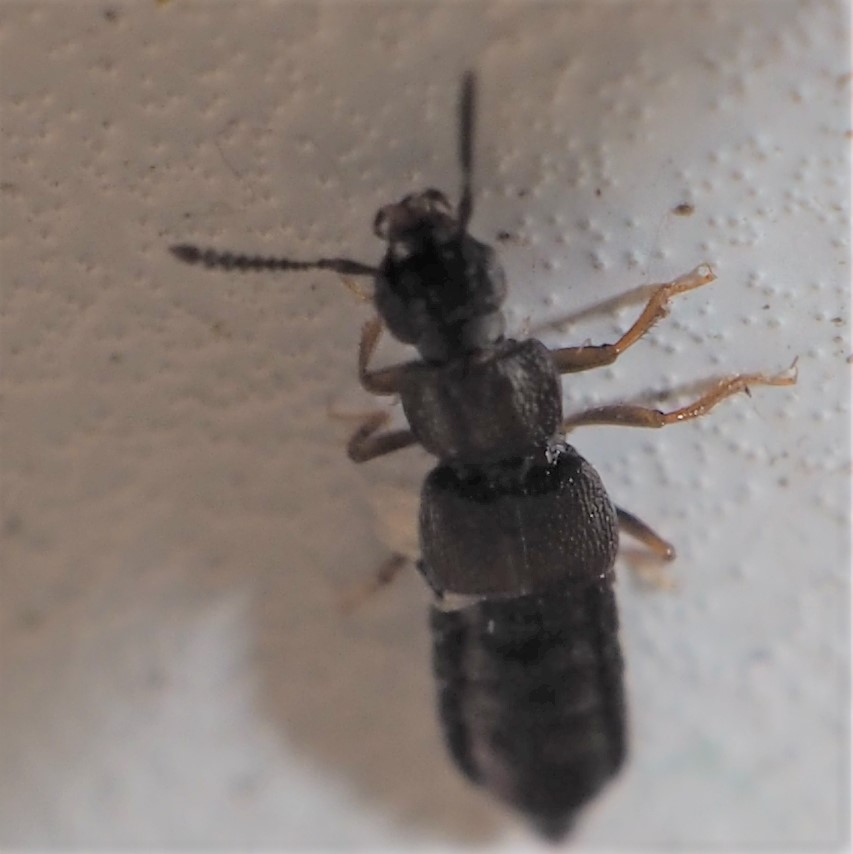
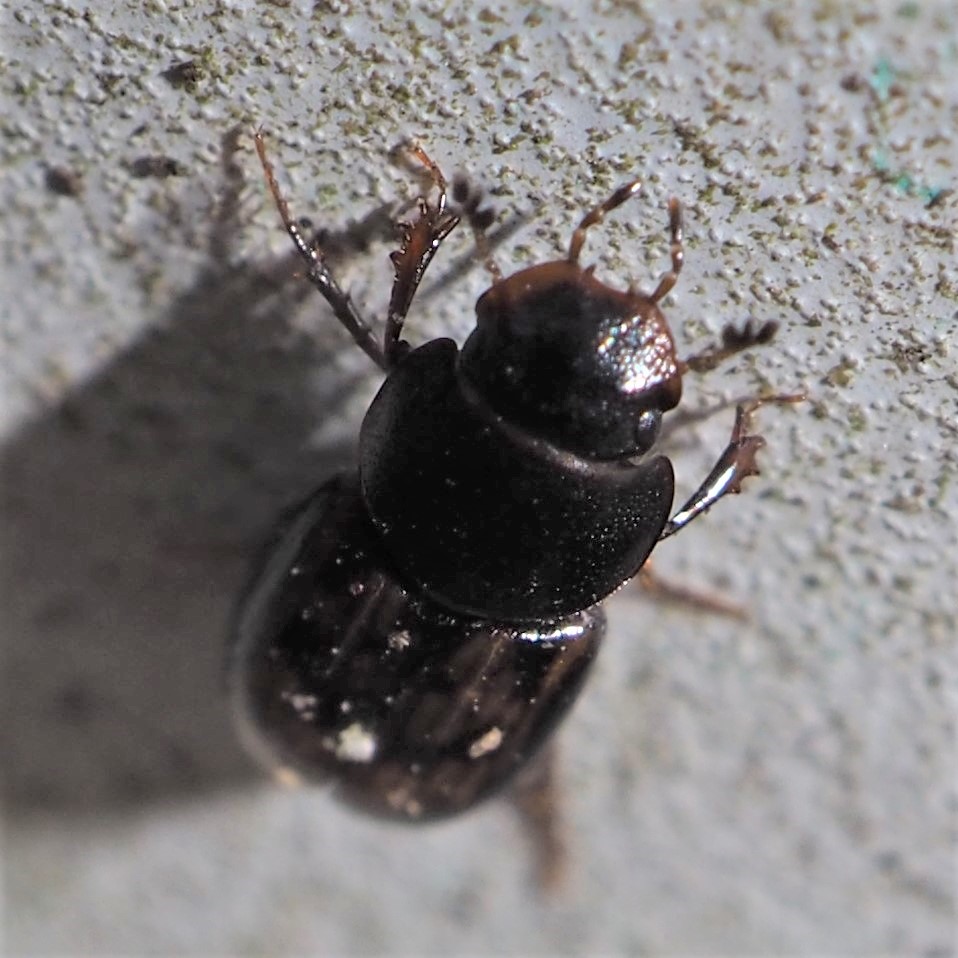
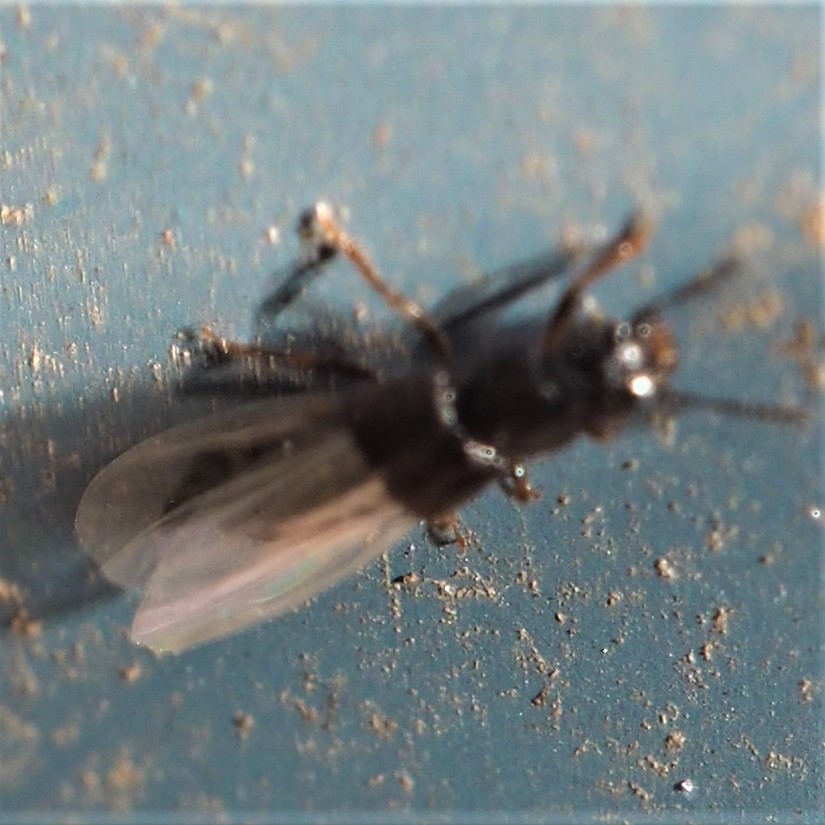
This little reddish beetle was climbing slowly on the siding. It was identified as a Marsh Beetle by @borisb. Second is a side view. Third is a shiny beetle coming from under a leaf next to the shop door.
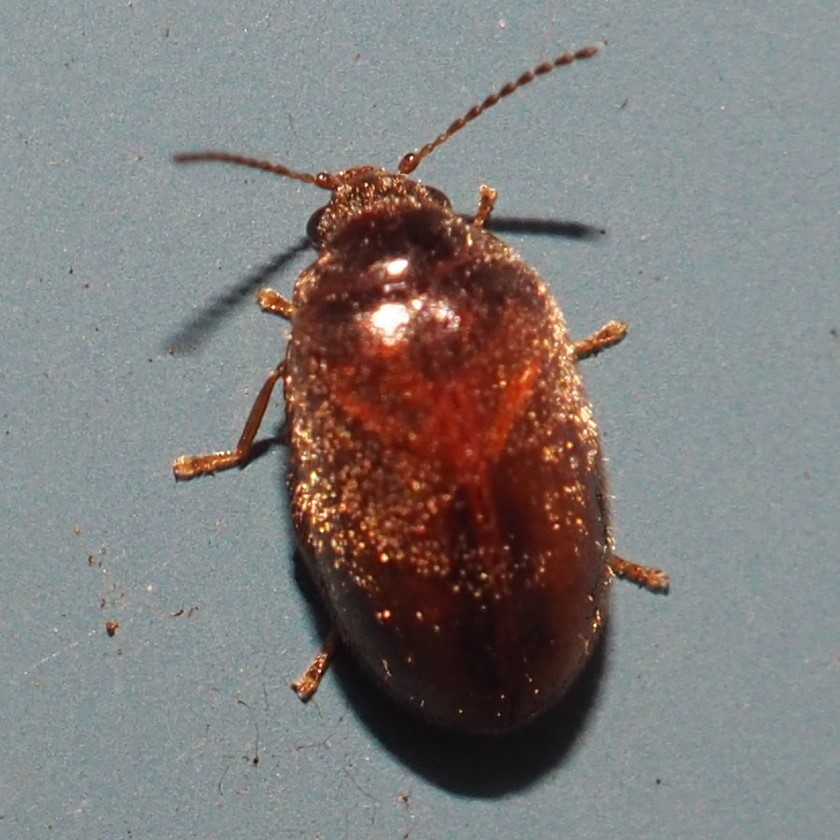
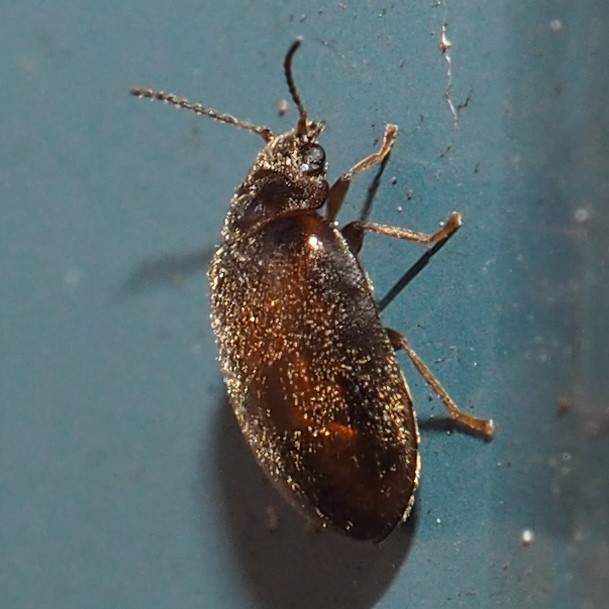
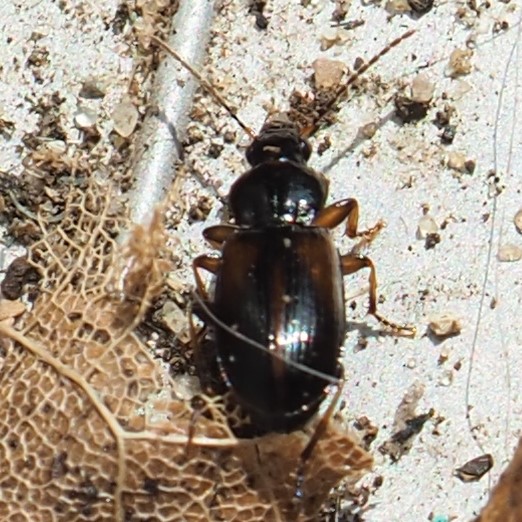
Here are a couple of Bugs. First is our first Assassin Bug of the season. This one is Zelus tetracanthus, the Four-spurred Assassin Bug. Second is a Damsel Bug. You probably believe the Damsel Bug must be a gentle creature who can let down her long hair so that Prince Charming can climb up. But in reality the Damsel Bug, like the Assassin Bug, has a long thick Proboscis used to impale and make a slurpy out of other juicy creatures. Look out, Prince Charming! Third is a Psyllid in the genus Pachypsylla. If you look at those shoulders, you can probably agree they look thick and strong. What do Pachypsylla and Pachyderms have in common?
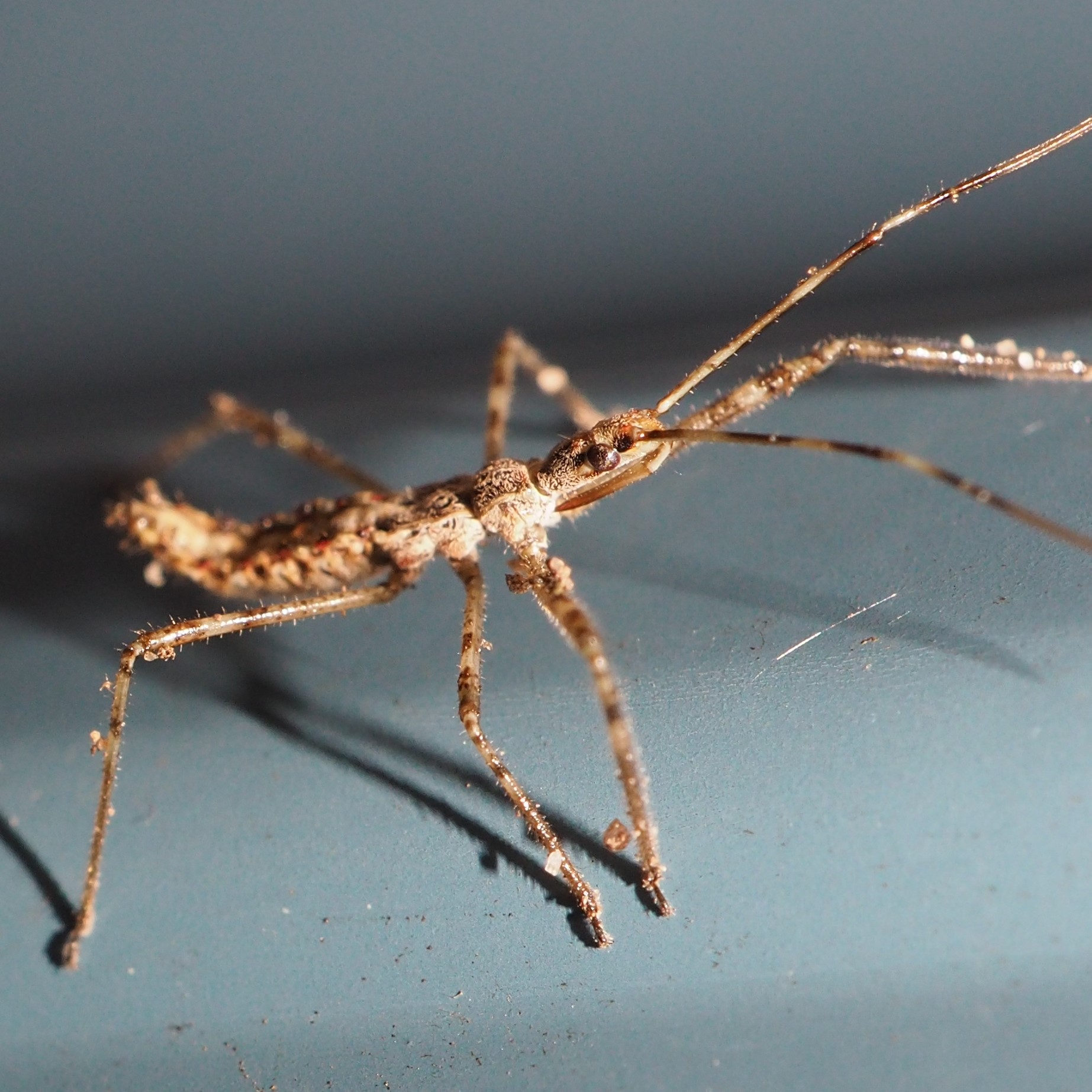
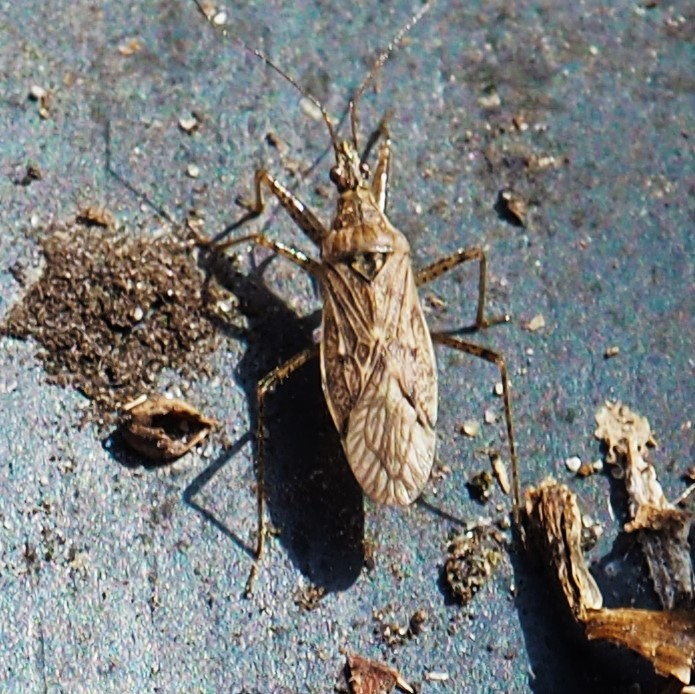
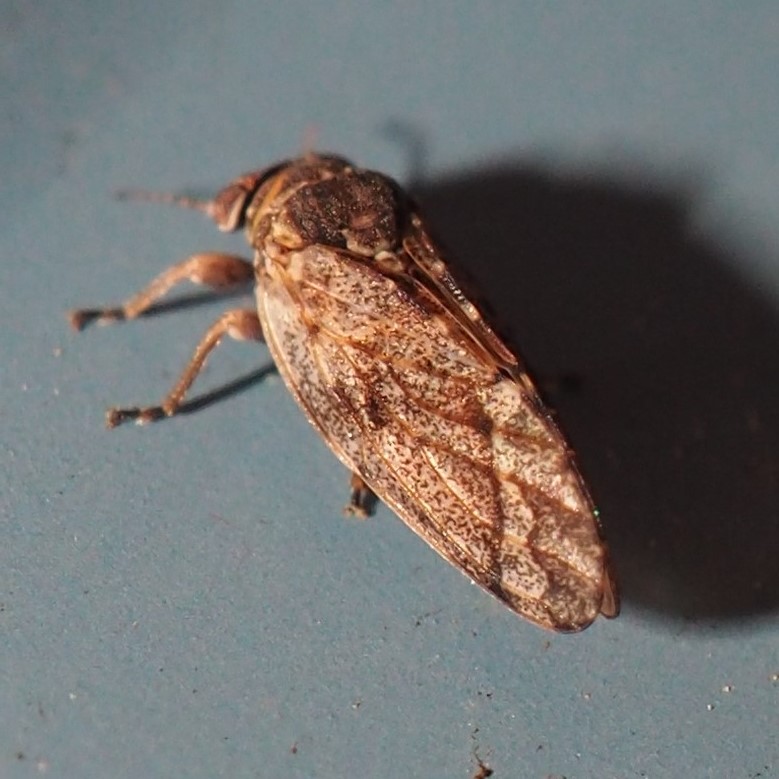
You have probably seen enough midges for a long time, but don't worry, they are already starting to thin out. This first one caught my attention by seeming to be very short, maybe 3 mm long. This could be the angle. Next is a gall midge with a pretty bad infestation of red parasitic mites. It looks as if the halteres (the little water-wing-looking things coming from the side of many flies) are also redder than they should be - or is that part of the infestation? Third is the first Crane Fly I recall seeing this year. Look a those tiny legs! They fill the picture! Last is a Wood Gnat, identified as Sylvicola alternatus through a conversation with several Fly experts on iNat. It is so exciting to see how people think and share information in the identification process!

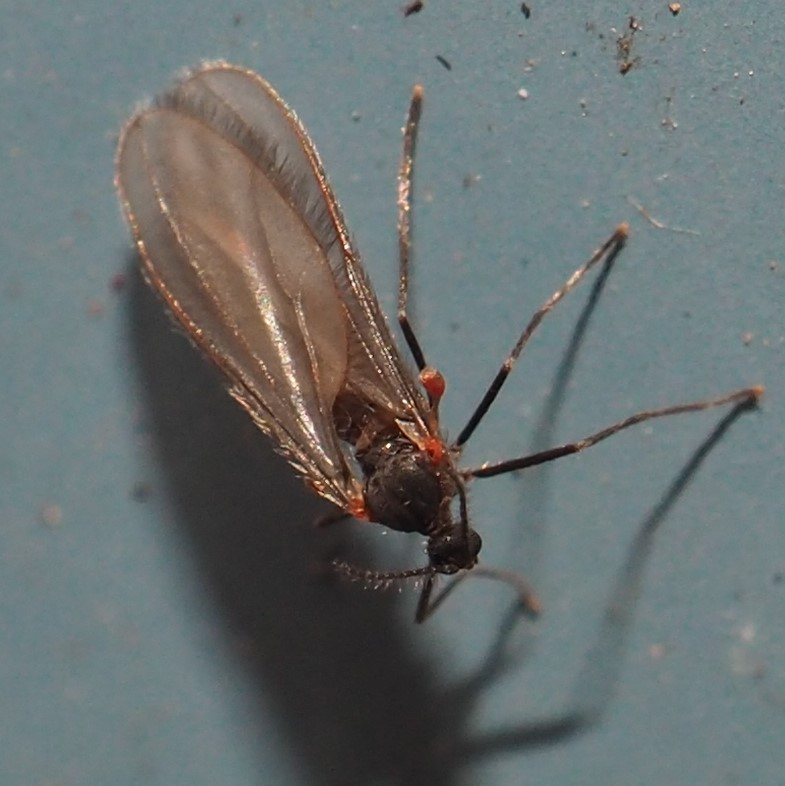
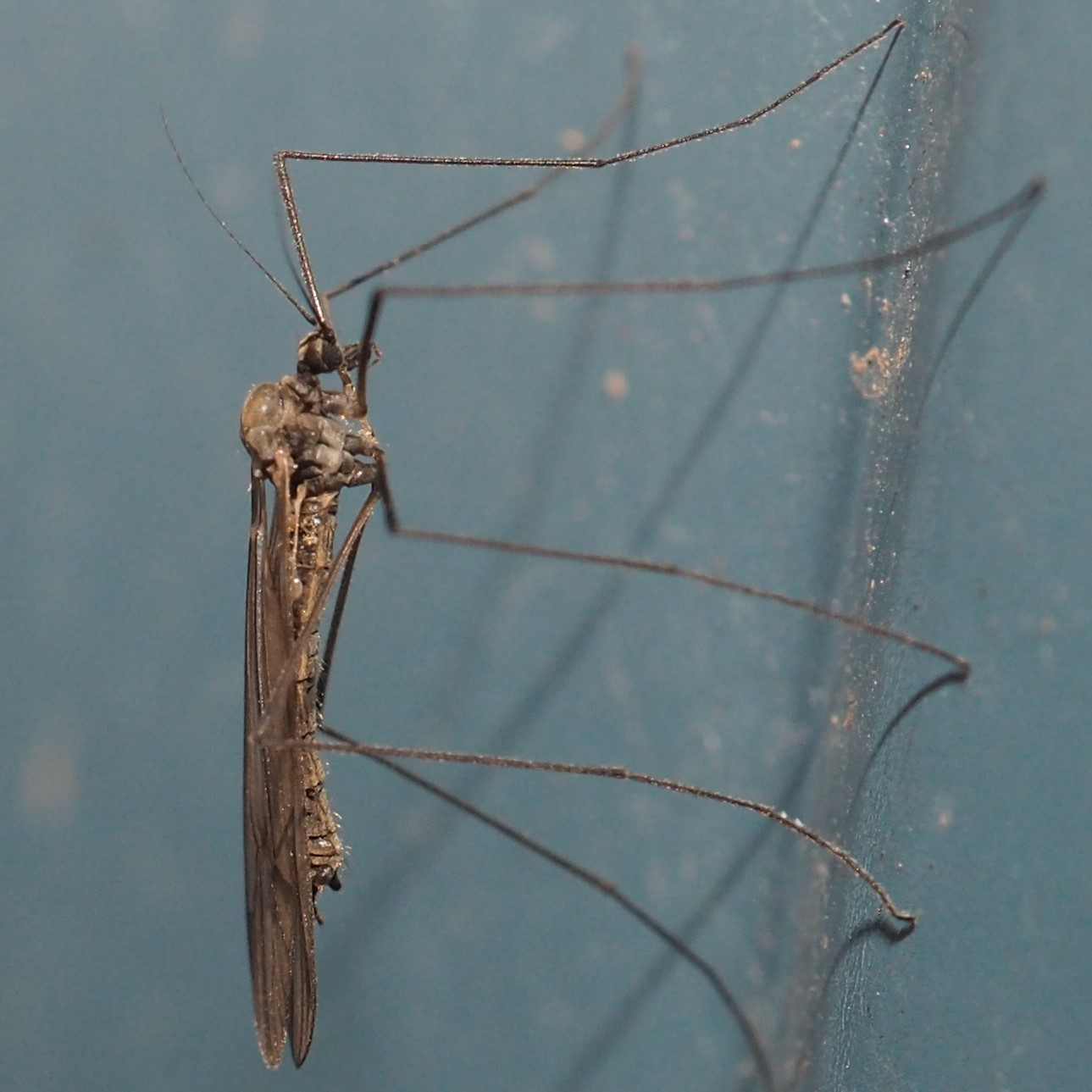
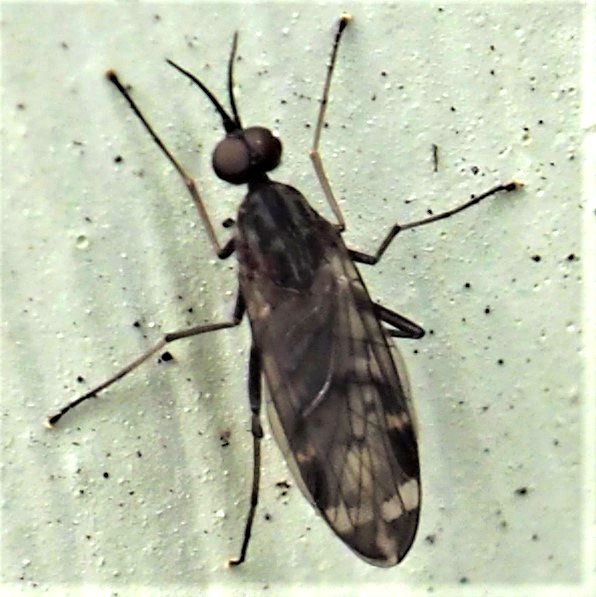
This is the first time I've ever carefully watched the Winter Aconites to see the bees that come to visit. So far we've seen two bees on them. On the 25th, though, just as I was thinking, "that's a new bee on me", I actually took a closer look and discovered that this "bee" had the big eyes of a FLY! It turned out to be a new (for me) hover fly, the Black-shouldered Drone Fly, Eristalis dimidiata. Next is another big green Blow Fly. Are those really the jaws of a FLY? Later I saw this fly again on the window ledge on the east side of the shop.
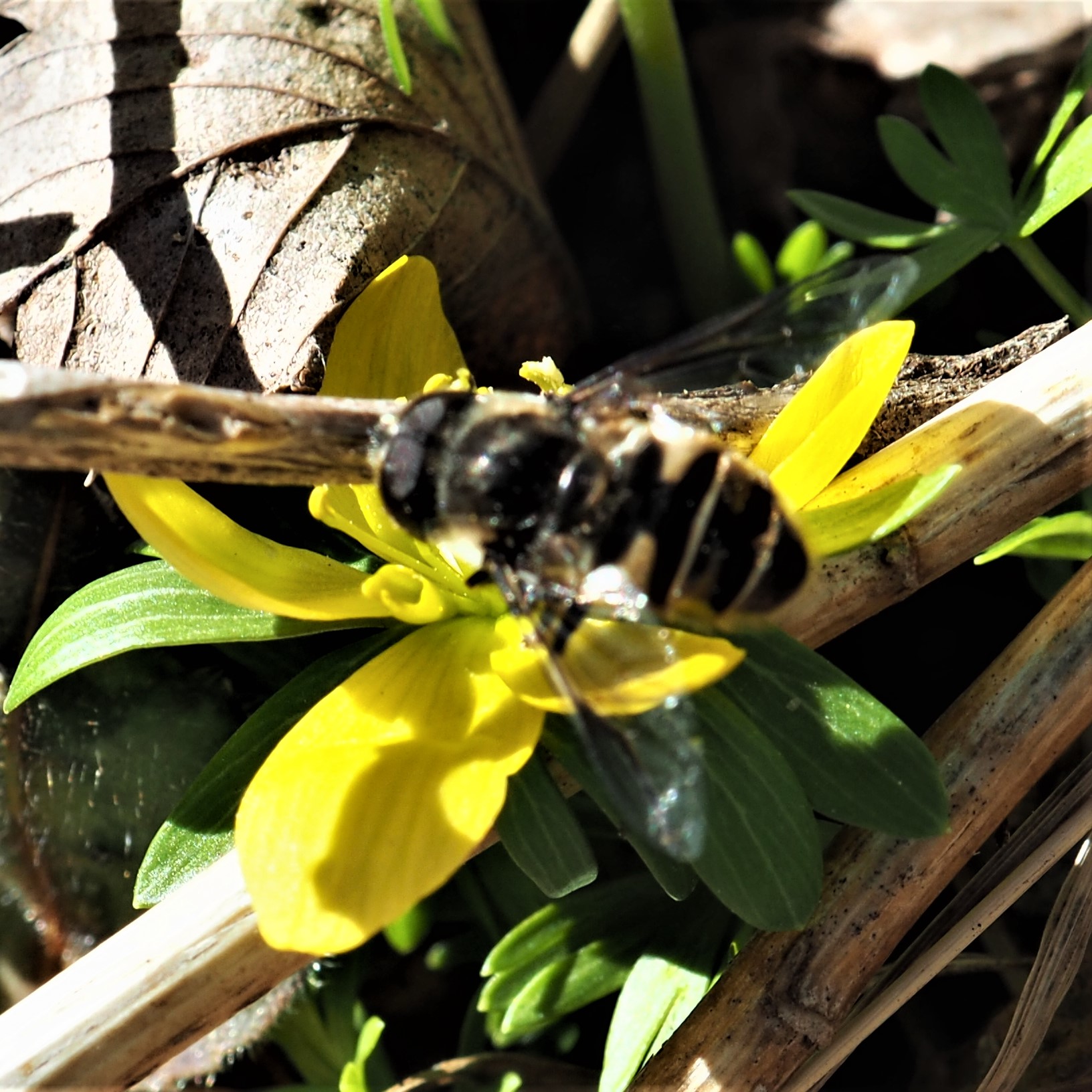
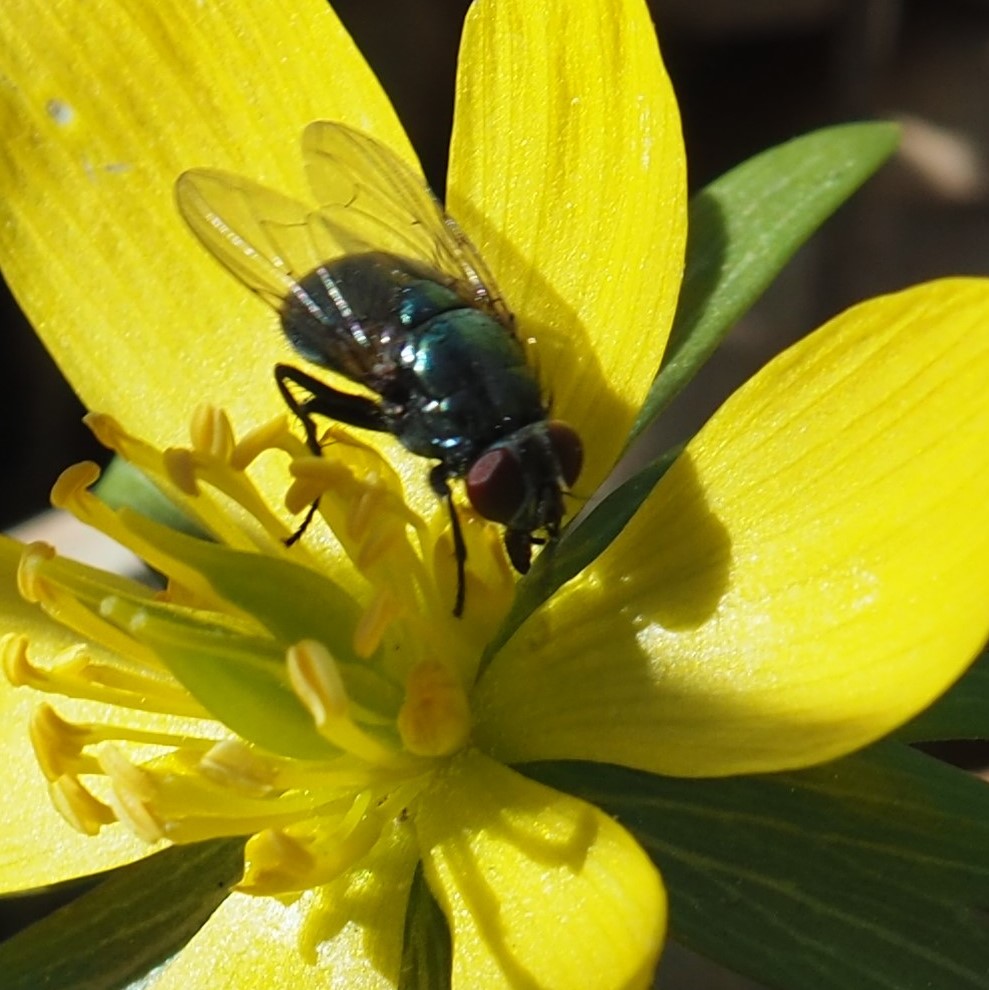
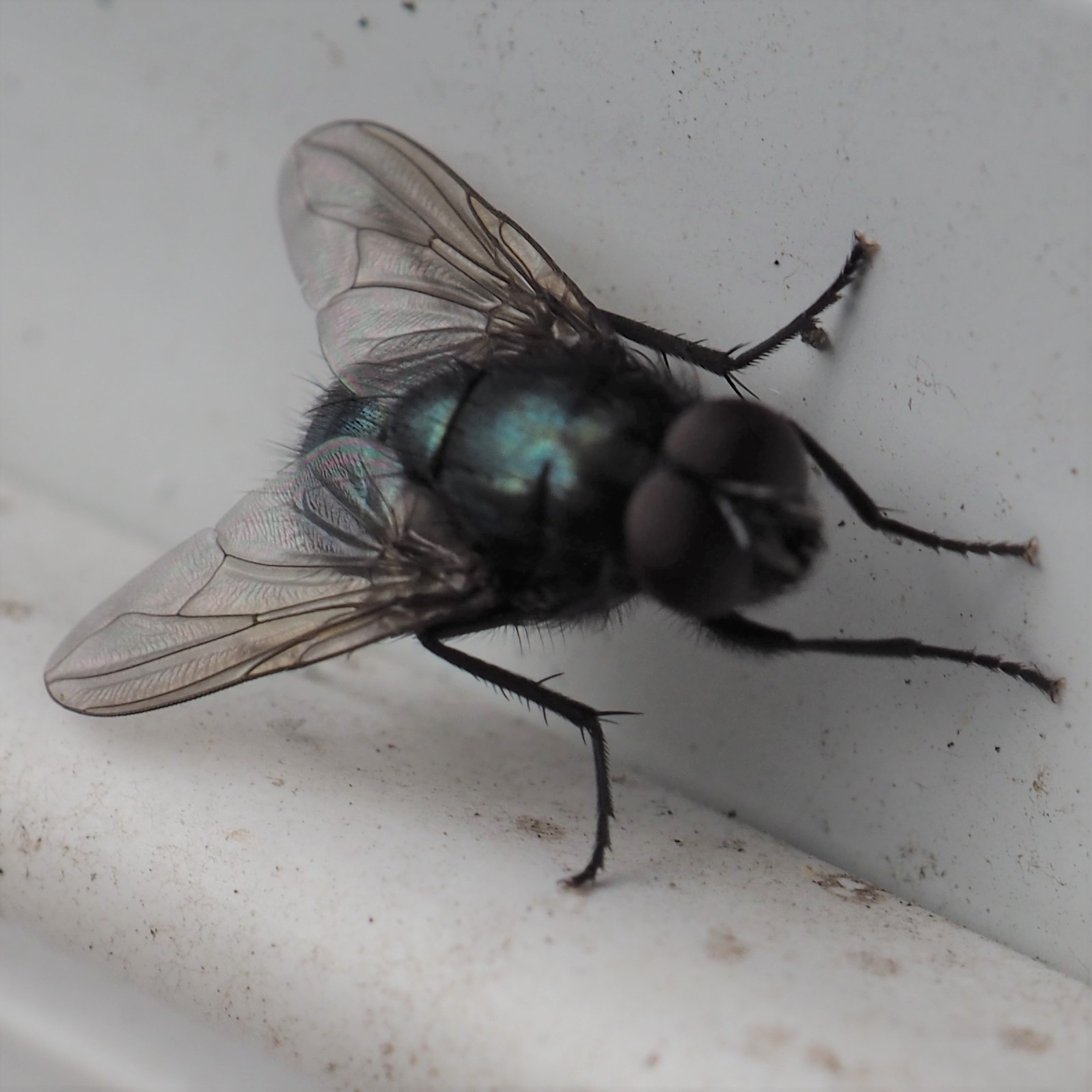
How about a break before we go on to the spiders? I have a lot of little vignettes of small clusters of 1-3 crocuses, and some other miniatures. The earliest crocuses come in many colors: light purple, white, yellow, and purple among others.
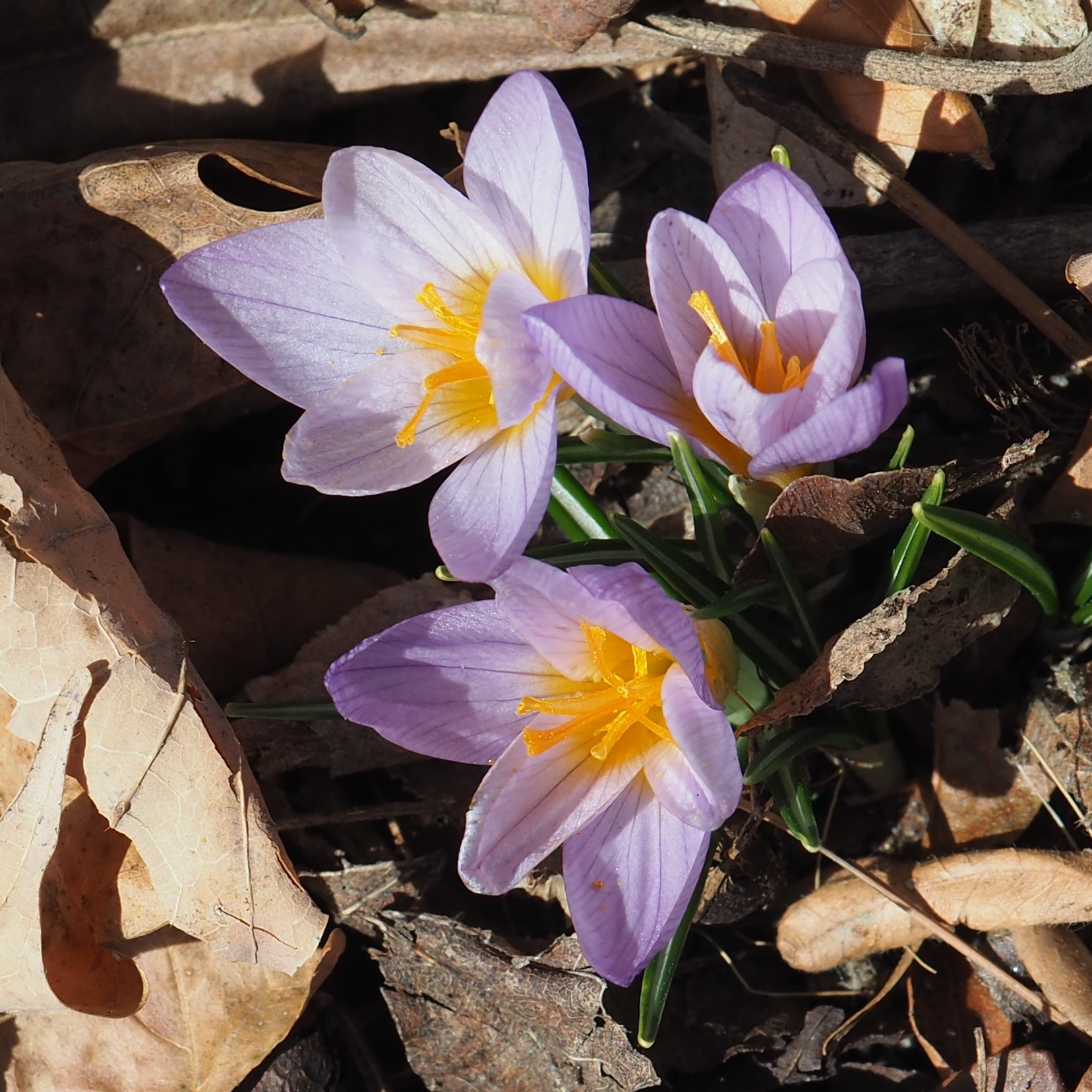
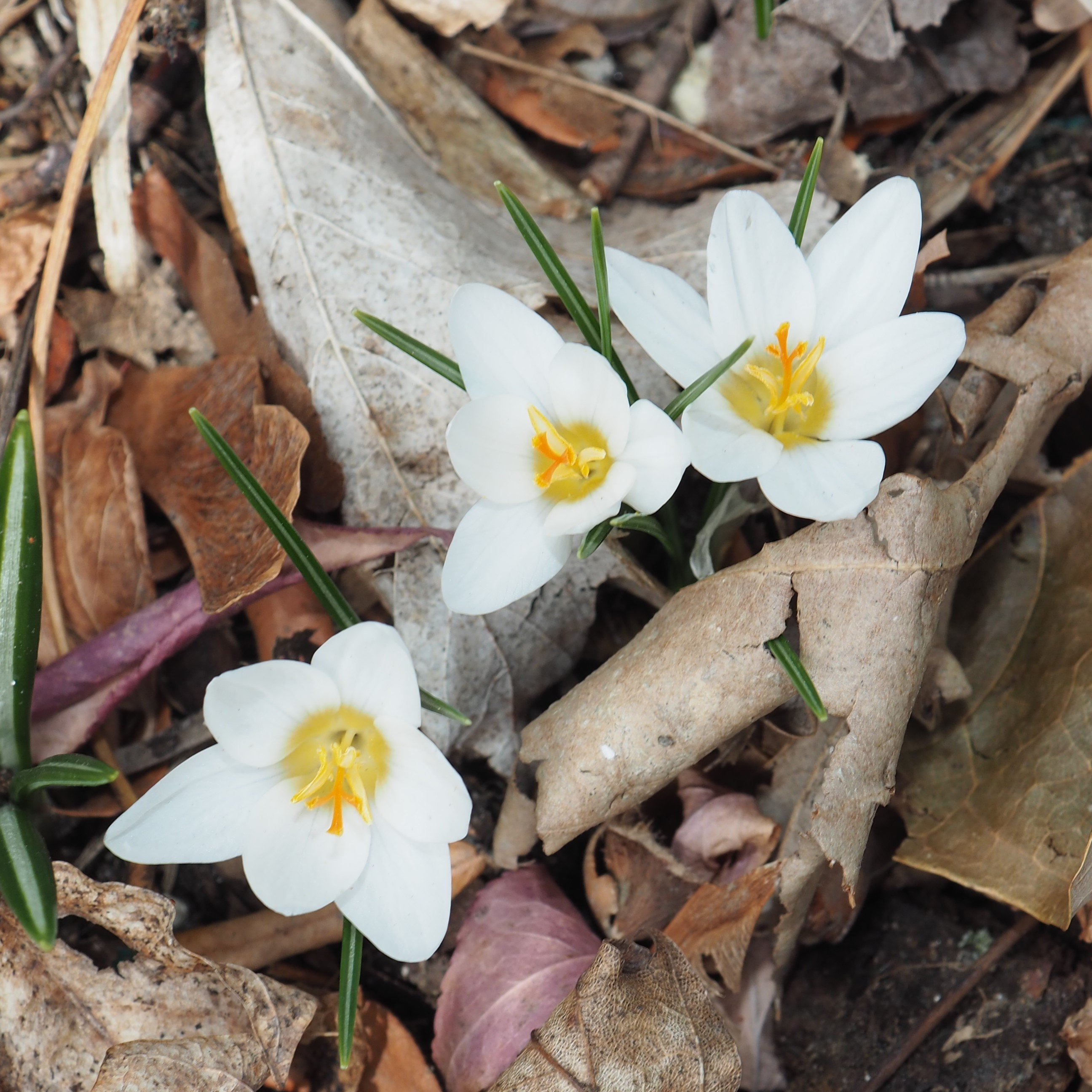

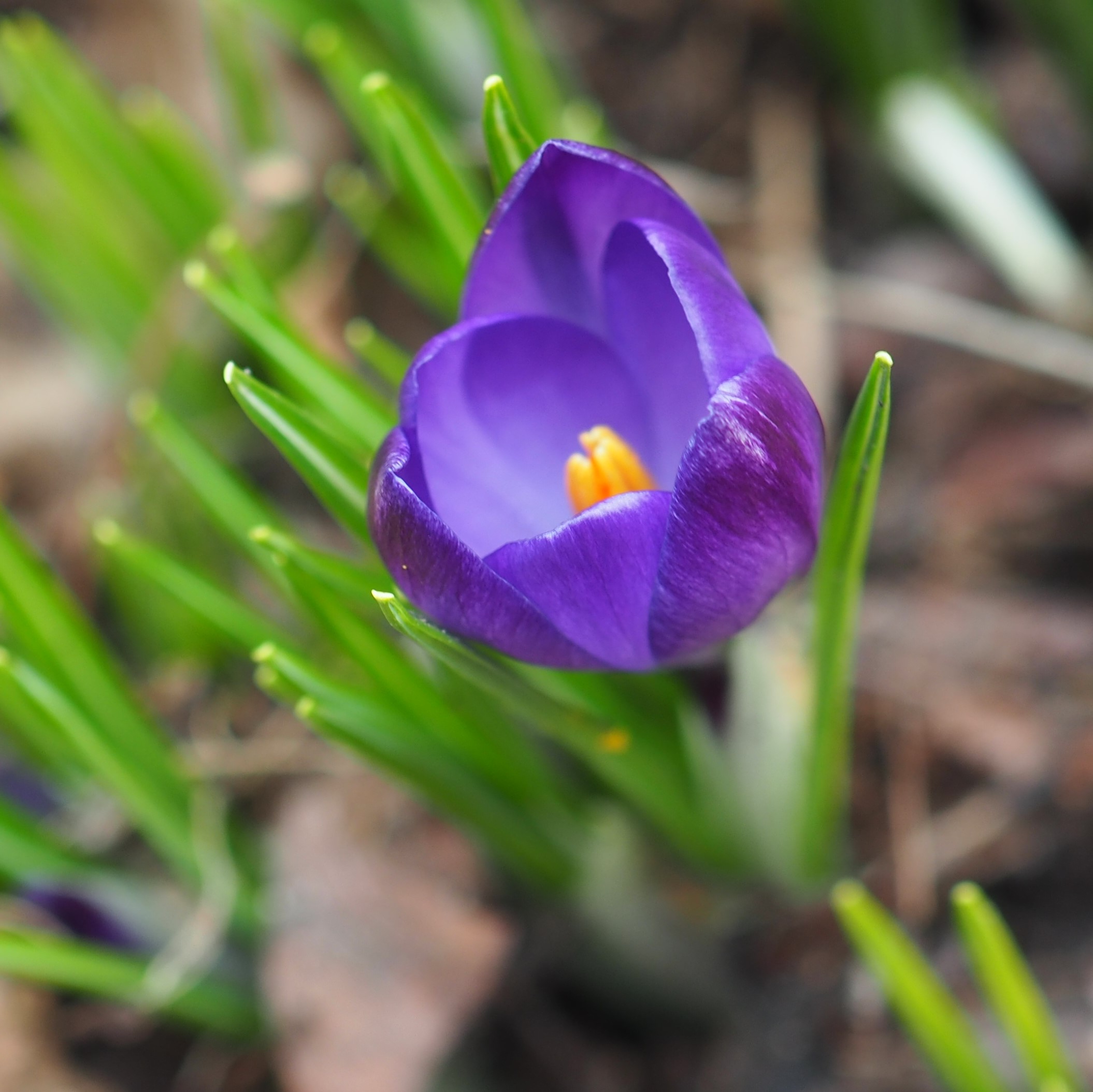
The Colchicums have come through the earth. Here they are with some small crocuses. Their leaves get very large and will eventually flop onto the ground and gradually disappear - till fall, when their flowers open (image 2) to look like large floppy crocuses with no leaves this time. The white Hellebore that we have been following for a few days is open now. Shame they always hang down so that we rarely see the center of the blossom. And the little blue Scylla (Squills) are about to bloom around the big maple tree out front.
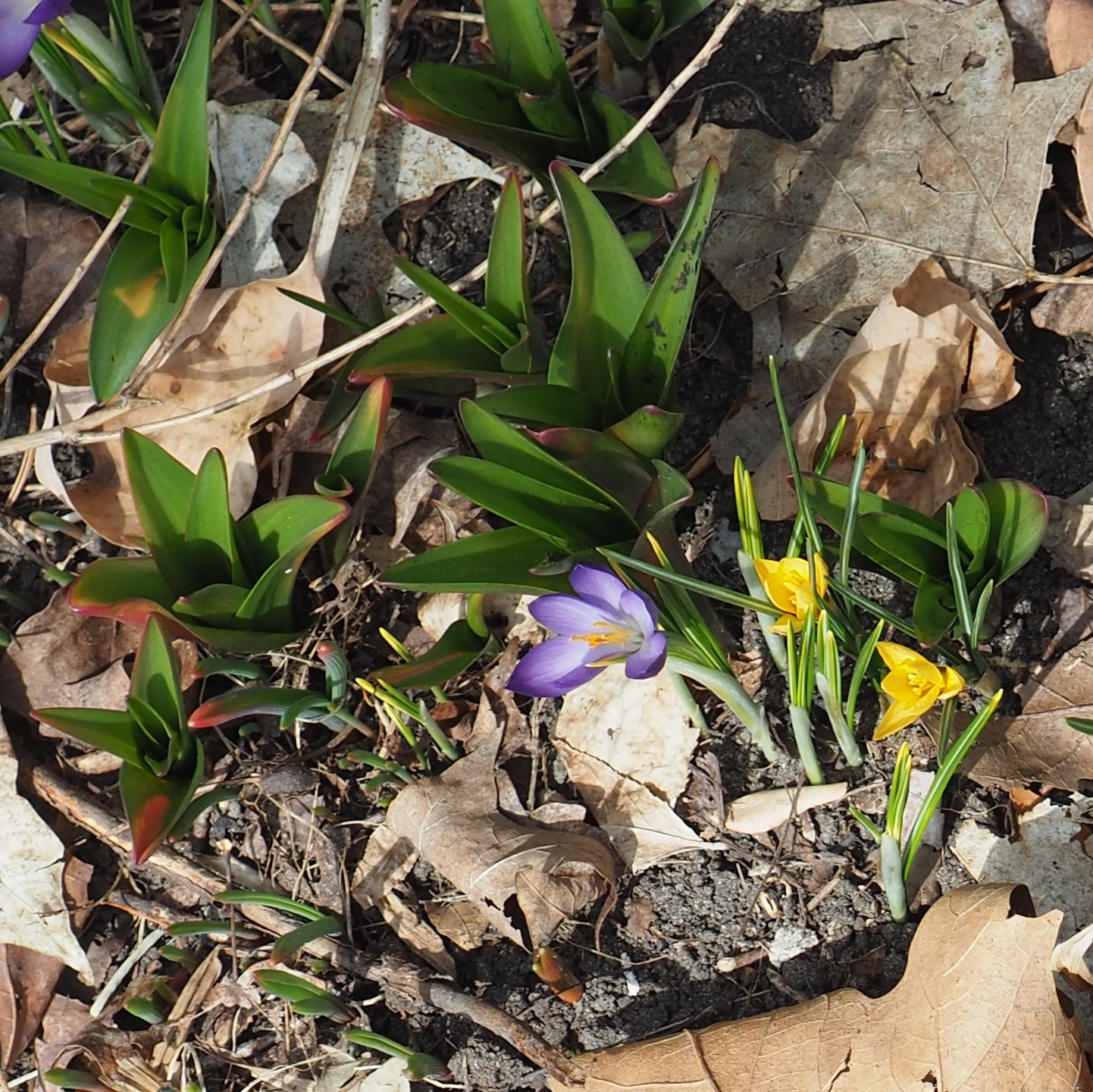
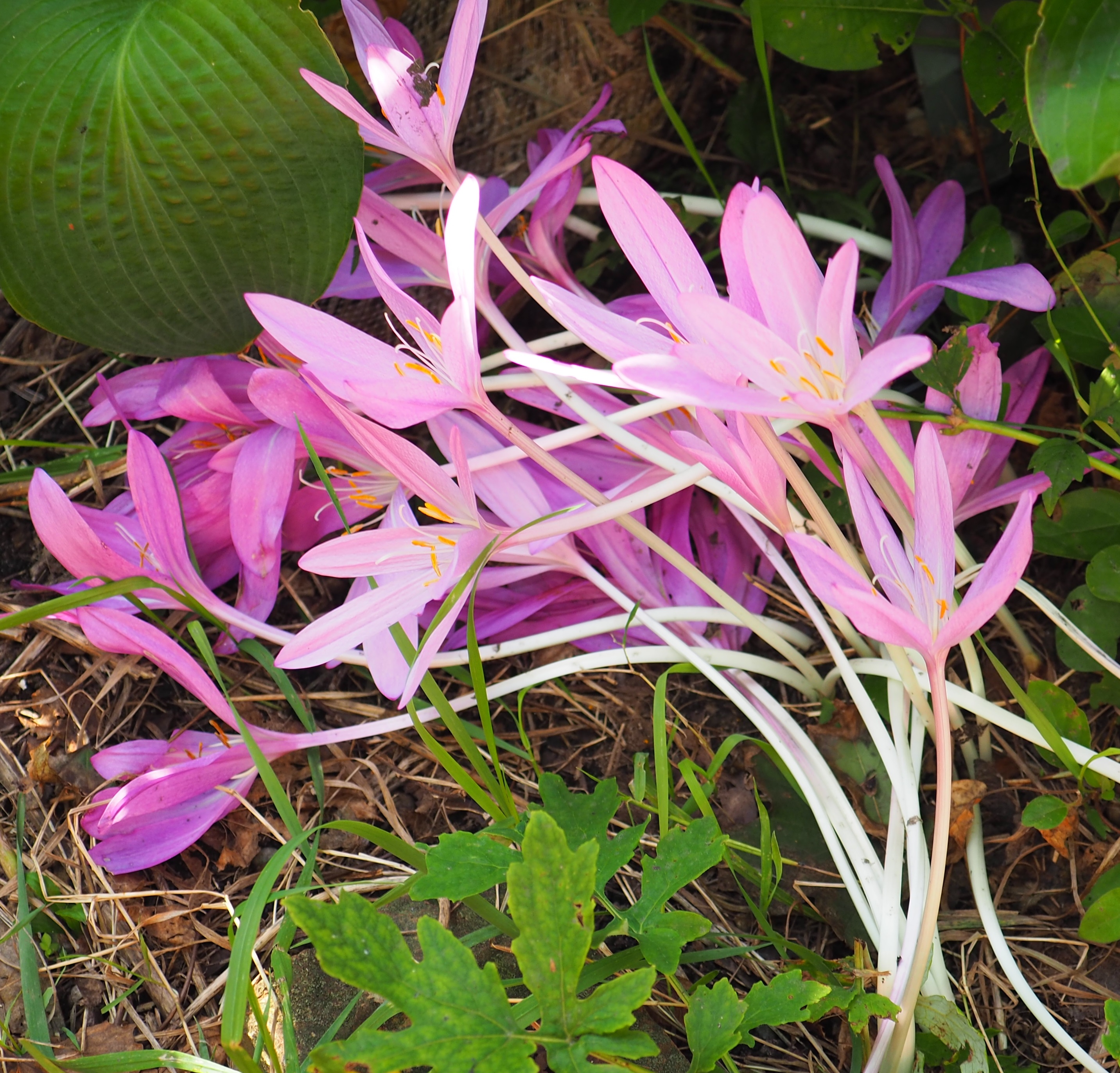
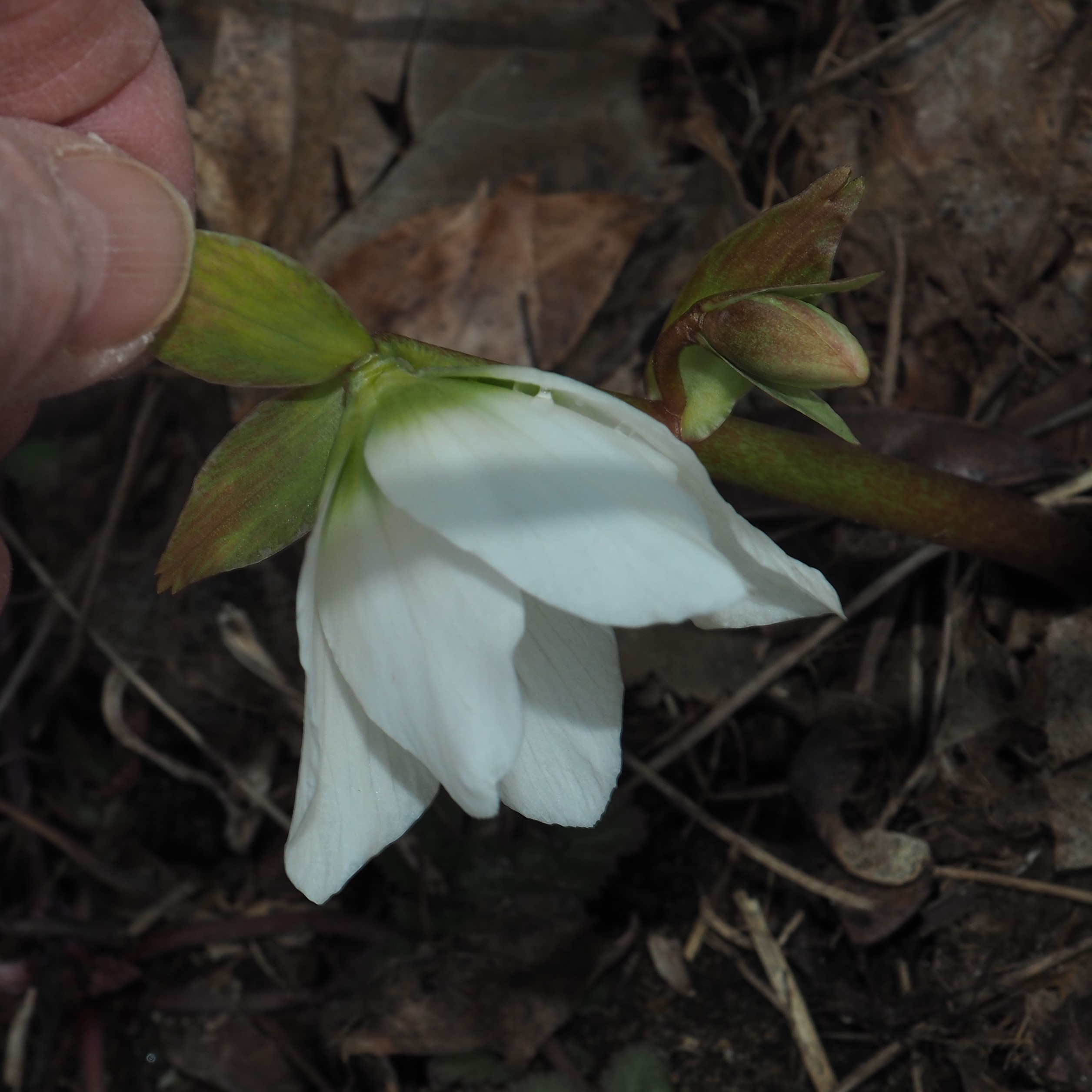
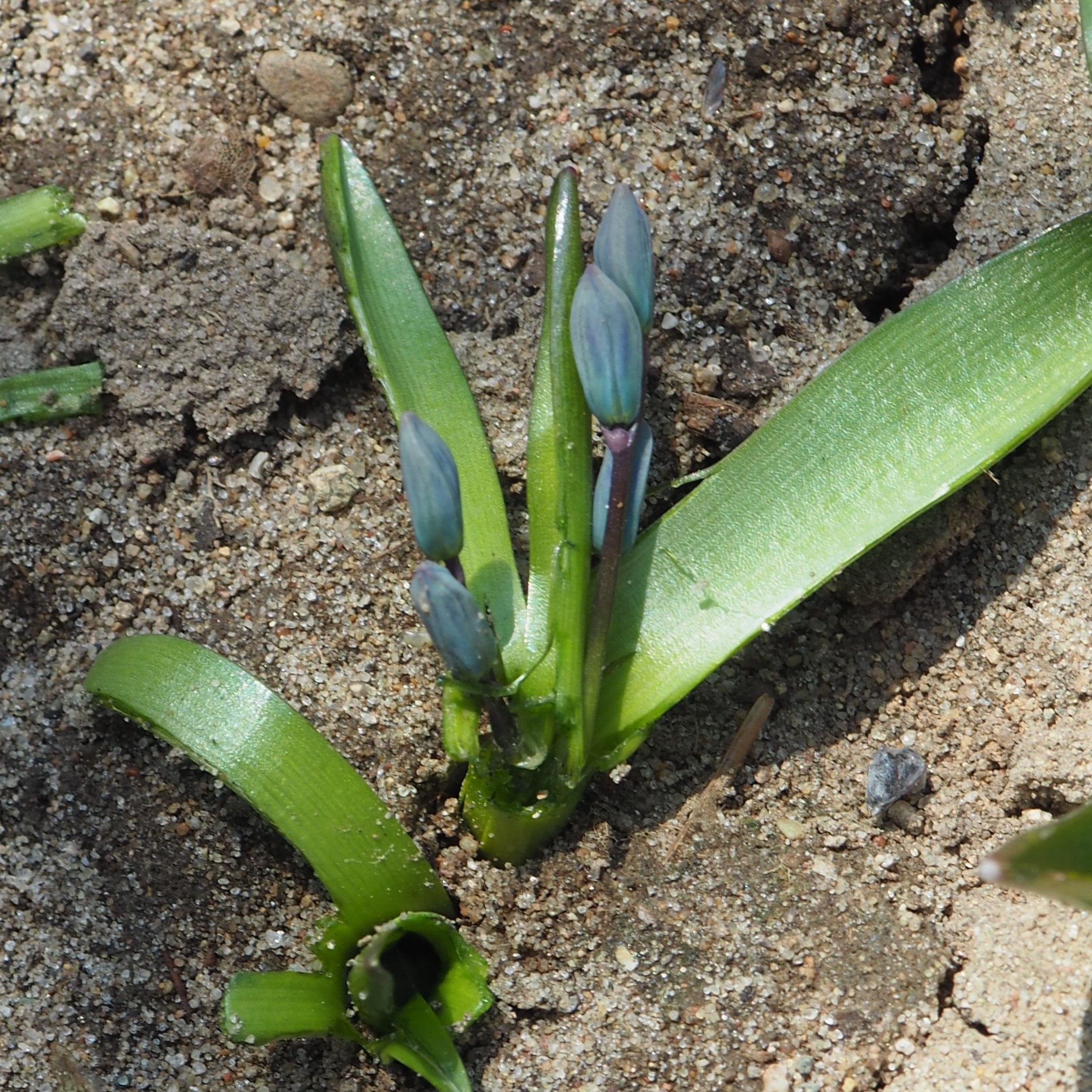
How many spiders did I see this past week? Hard to count, as the Sheetweb and its cronies all look so similar. At least we have some with markings or sex to differentiate somewhatly. I'll try to show them chronologically by sightings. First up: genus Bassaniana
or Ground Crab Spider? This one has a pretty flat head but more interestingly, the abdomen has two large indentations that make me think of eyes. I'm going to vote for Bassaniana. Next at 11:06 looks like a member of Lyniiphids, a male; and next taken 5 minutes later, another that looks similar but female. Then a male from around the corner. Grammonota? Rebecca? Matt?
1. Ding, ding, ding! Bassaniana is correct!
2. I think you're right, they look like more little Grammonota spiders. But aren't they all male? Seems like they all have puffy palps.
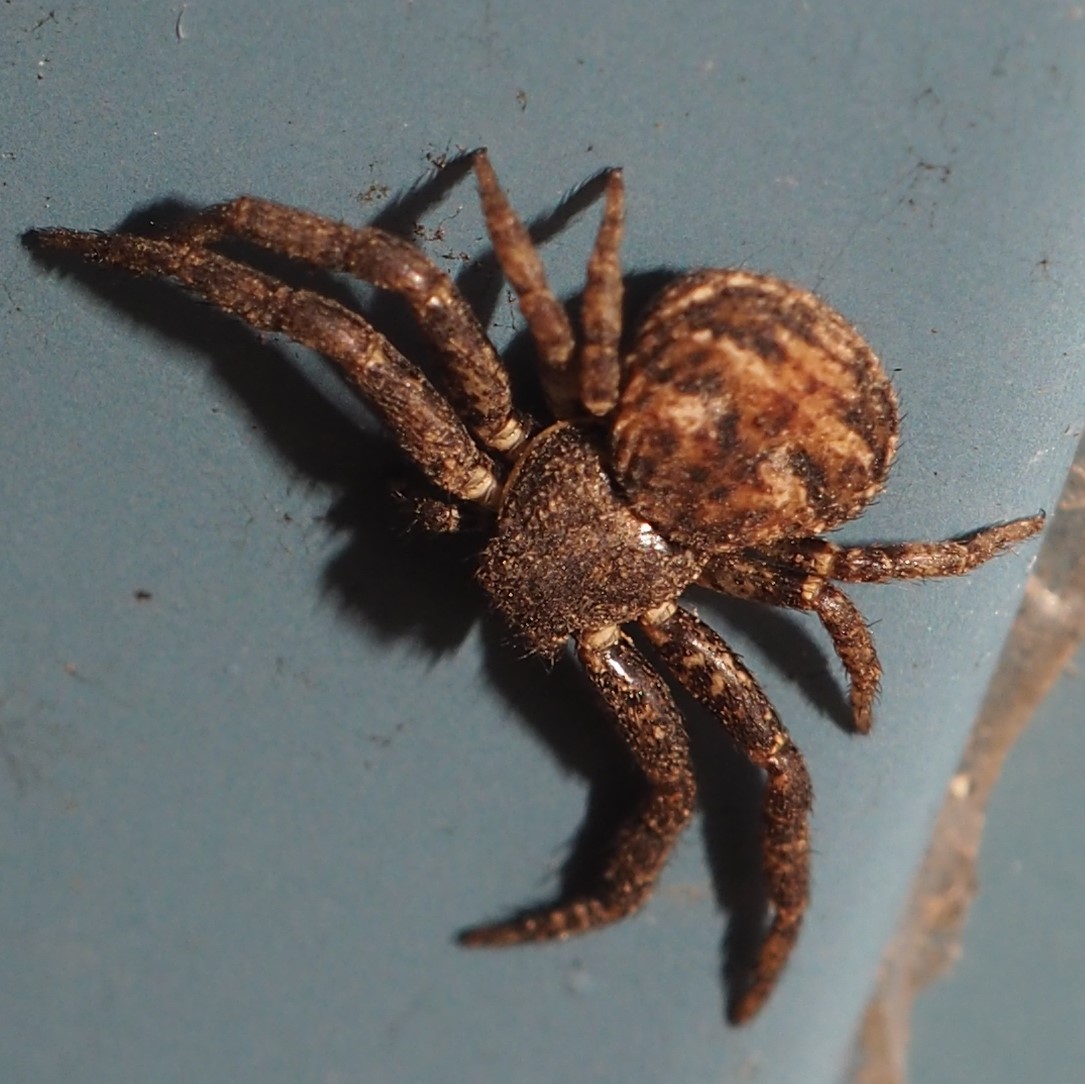
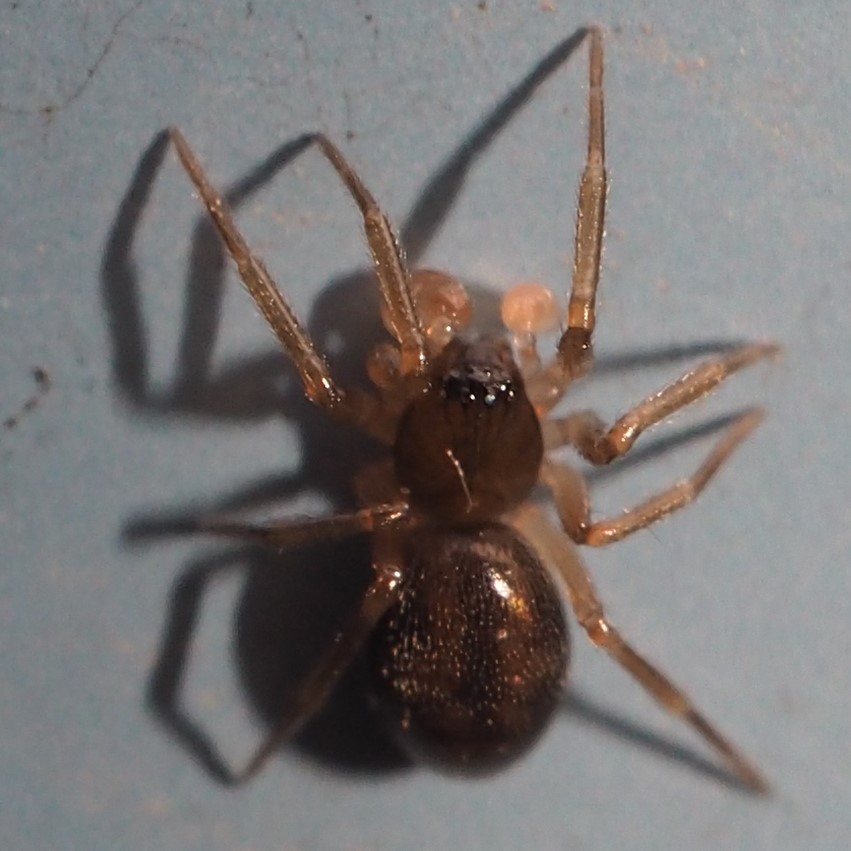
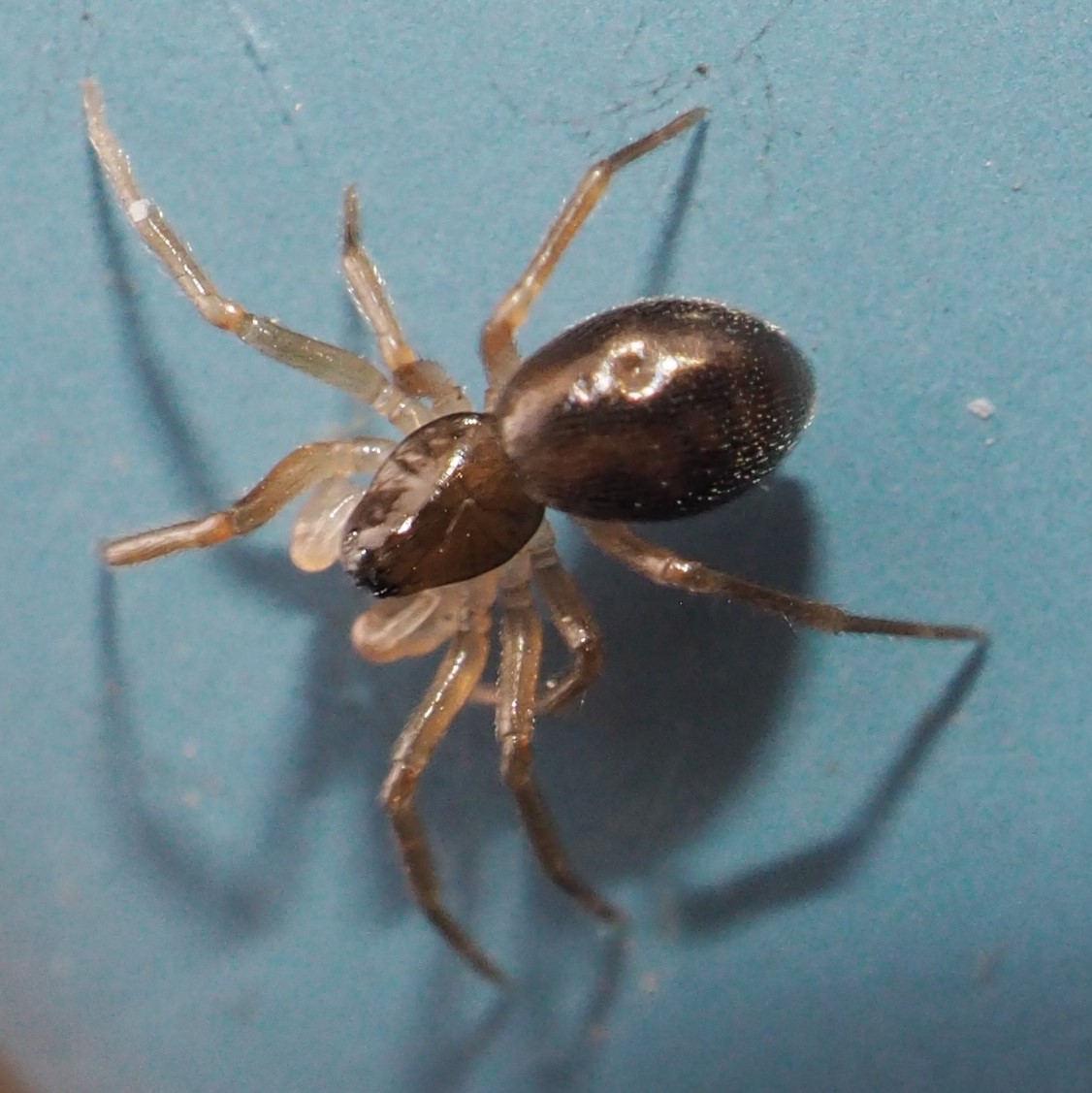
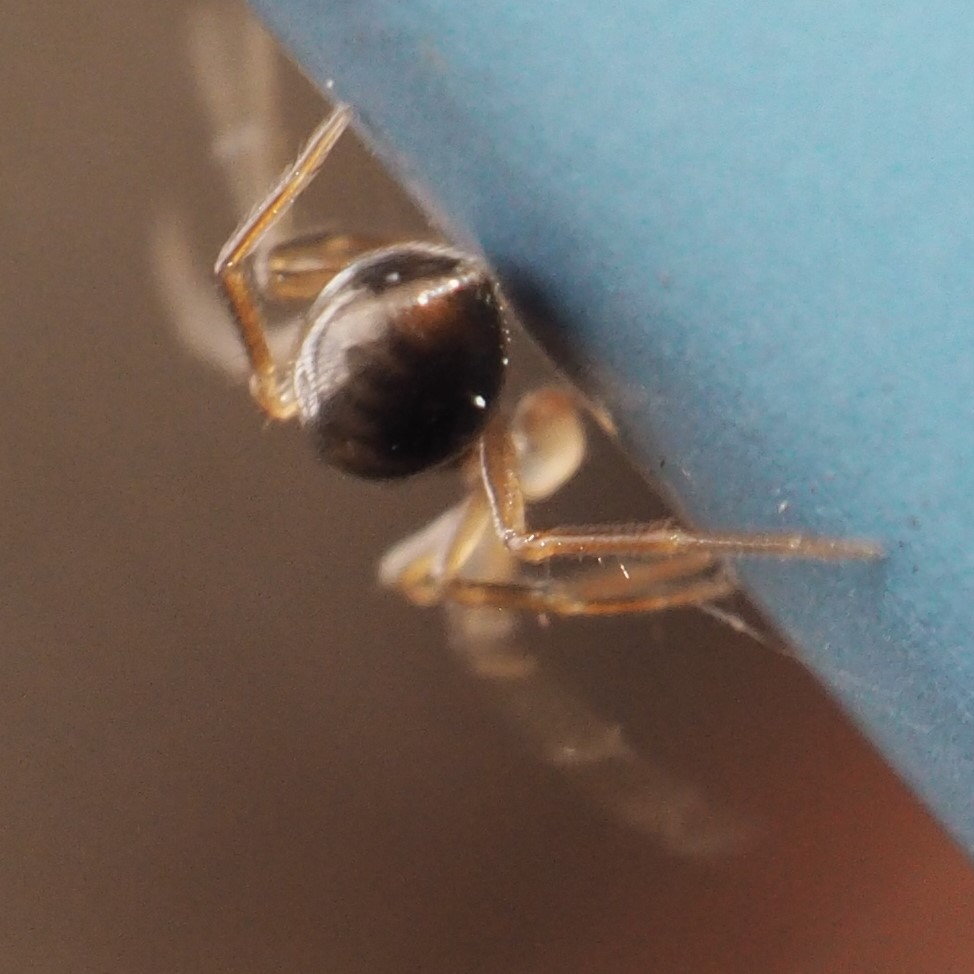
That same day, March 28th, at 10:59 am, another kind of Sheetweb etc., but with an opaque abdomen. Lovely red legs! Then, finally on to the 29th about 2:32, when I spotted this possible Jumping Spider. The front eyes don't have the "headlights" feel to them, but there is something about the posture that reminds me of a Jumper. Rebecca says, "Cutie little Pardosa! Teeny wolf spider, hence the big forward-facing eyes but not quite jumper eyes. Can move in a very jumper-like fashion." Last is a seeming Sheety look, but with a different pattern on the abdomen (2:54 pm).
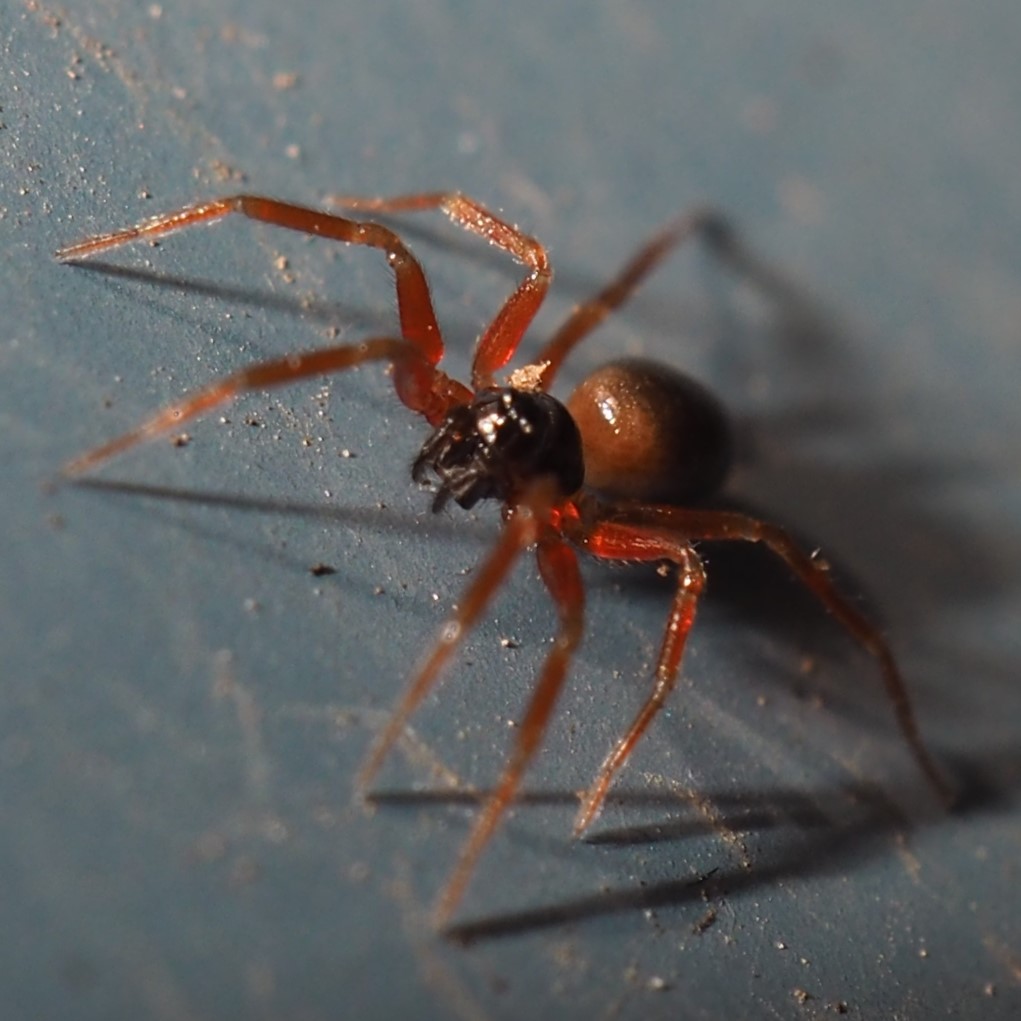
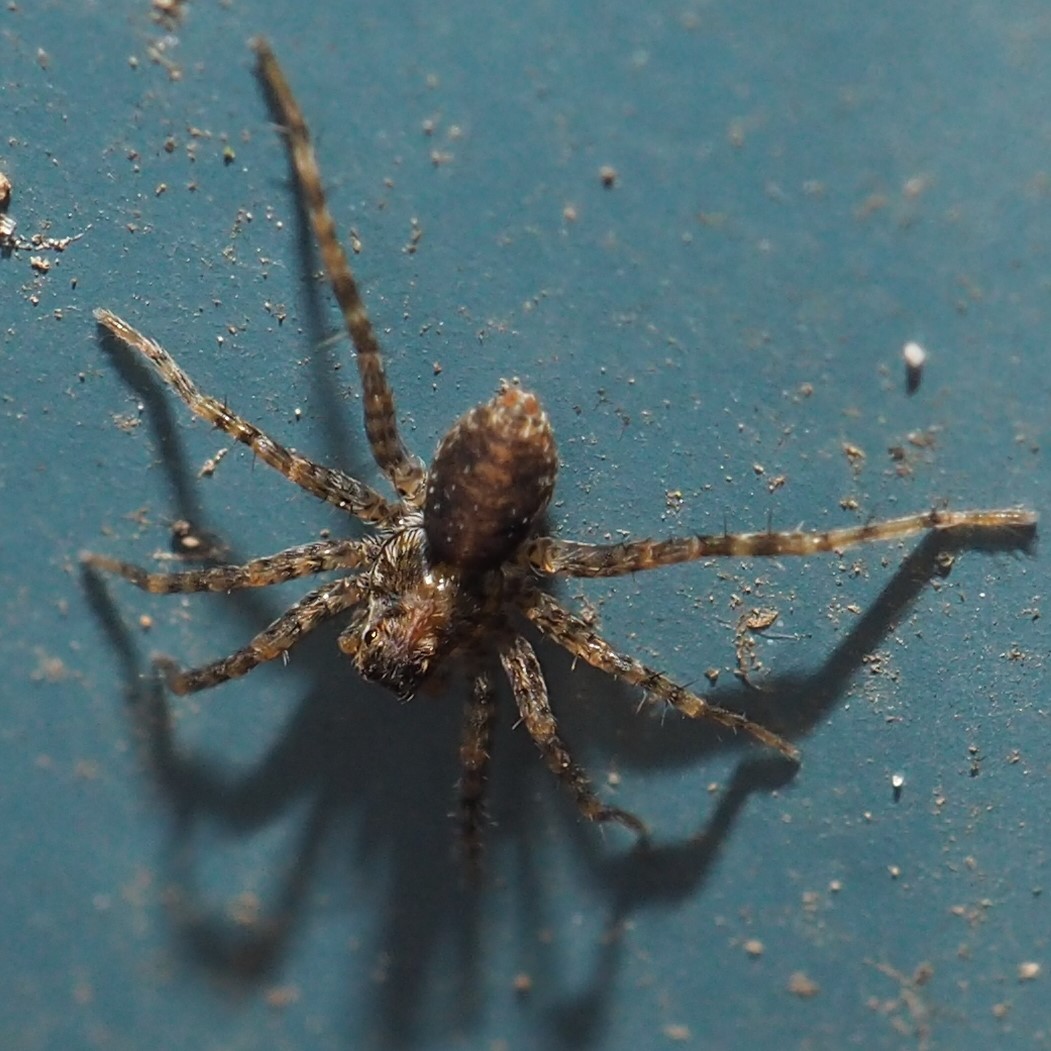
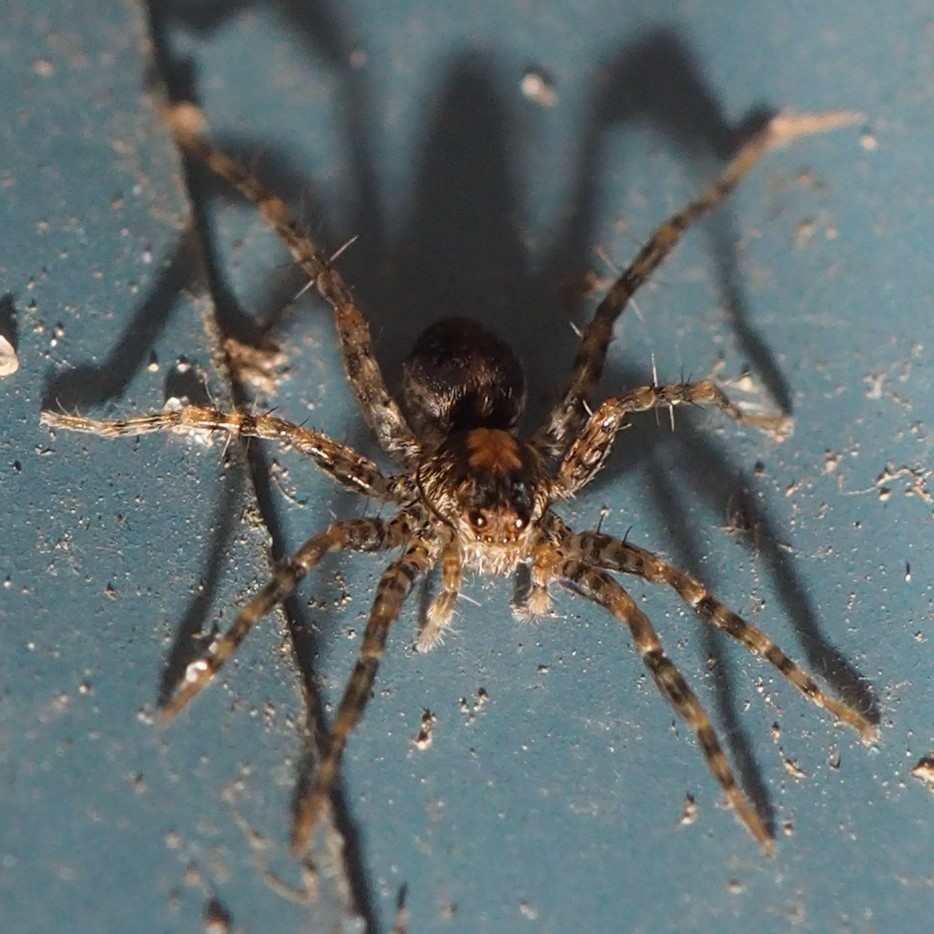
This one has a seeming Sheety look, but with a different pattern on the abdomen (2:54 pm). Another with lighter colors at 3:12. Rebecca says they're all Linyphiidae (Sheetweb and cronies) but that the last one may be a Dwarf Spider (part of the crony gang).
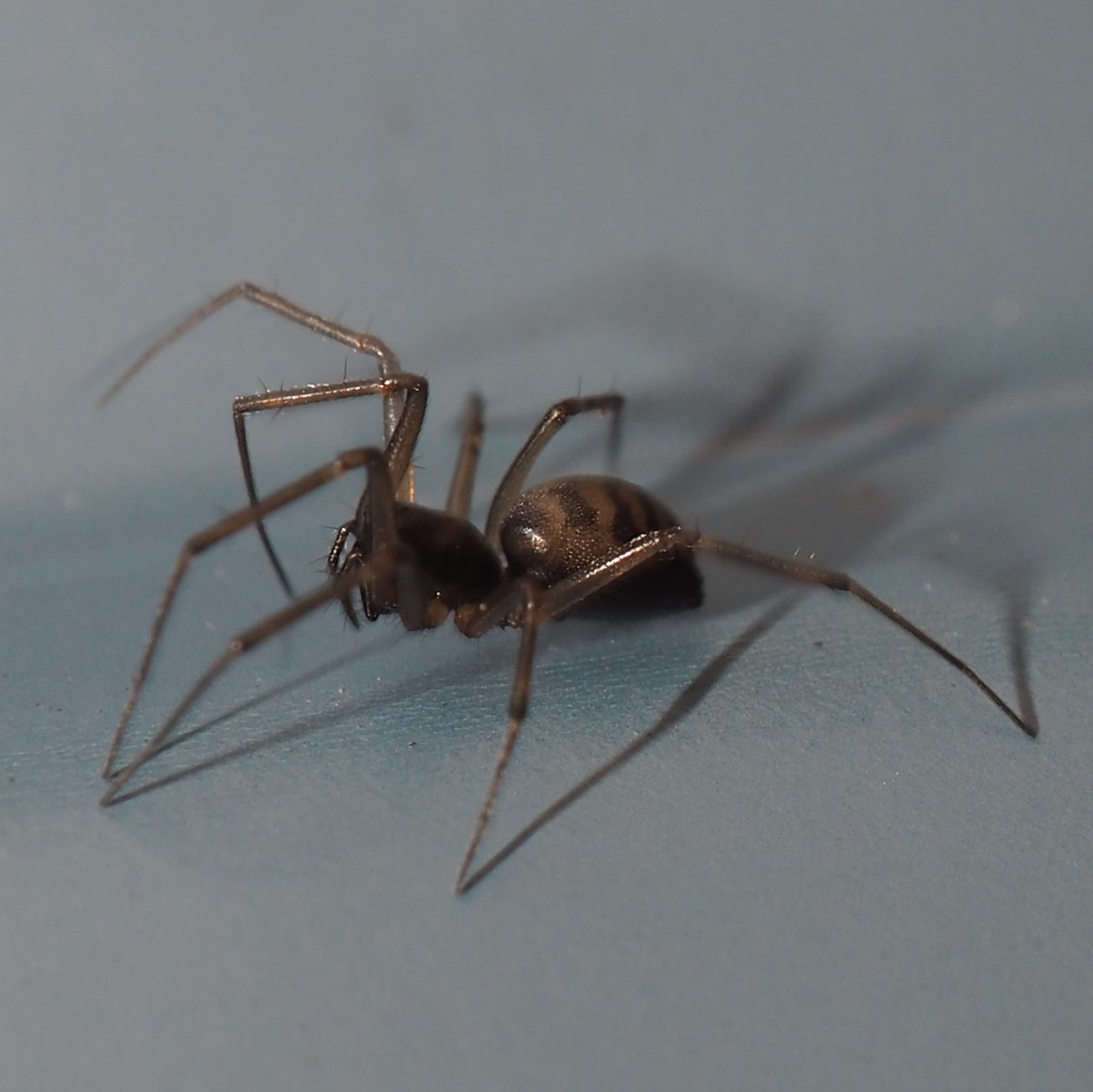
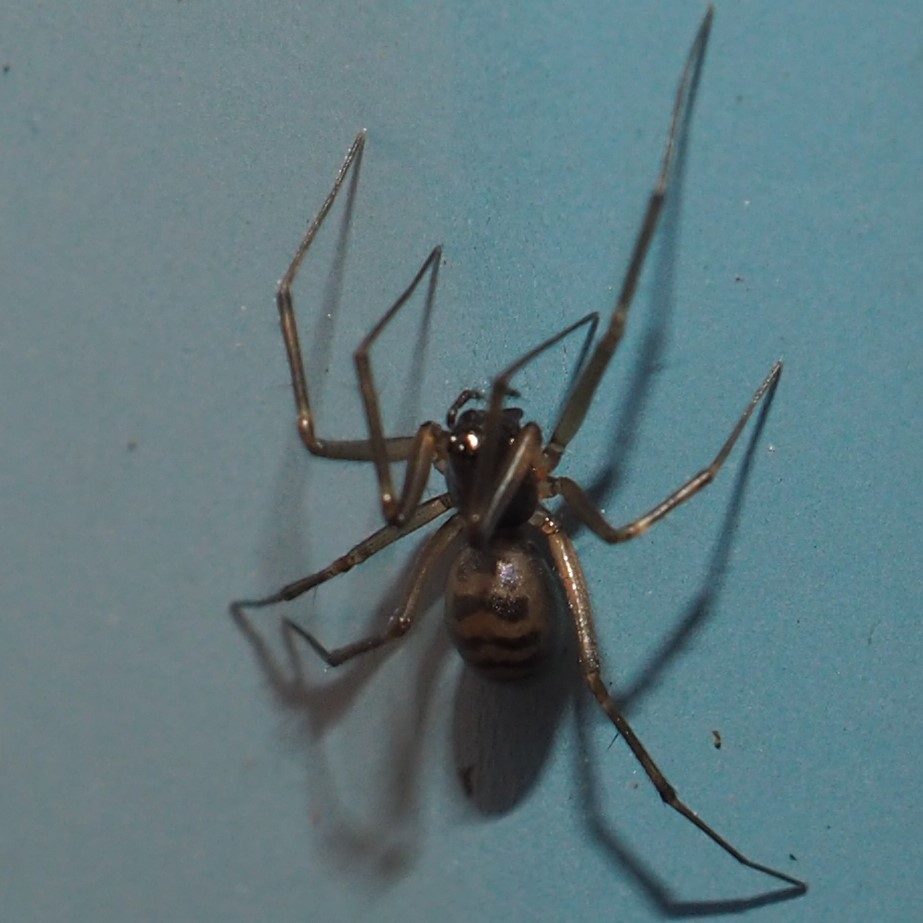
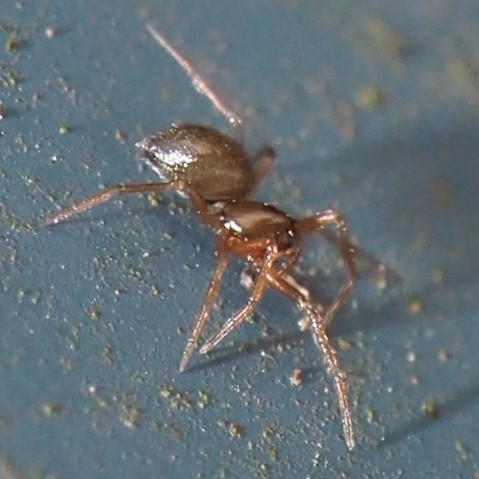
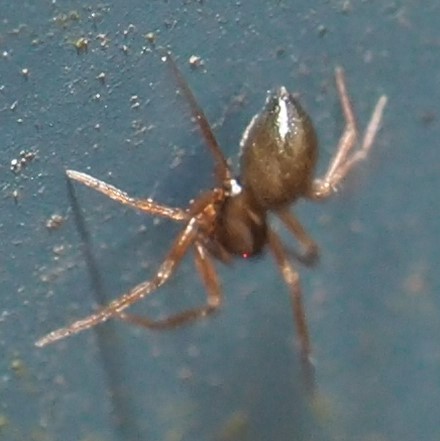
A few days ago I saw my first stonefly of the year. It was over a month later than the same kind last year. Here is one from 3 days ago and one from today. Last is an animation of one that I had put into the fridge to cool down for better photo-taking. Didn't slow it down a hair, did it?
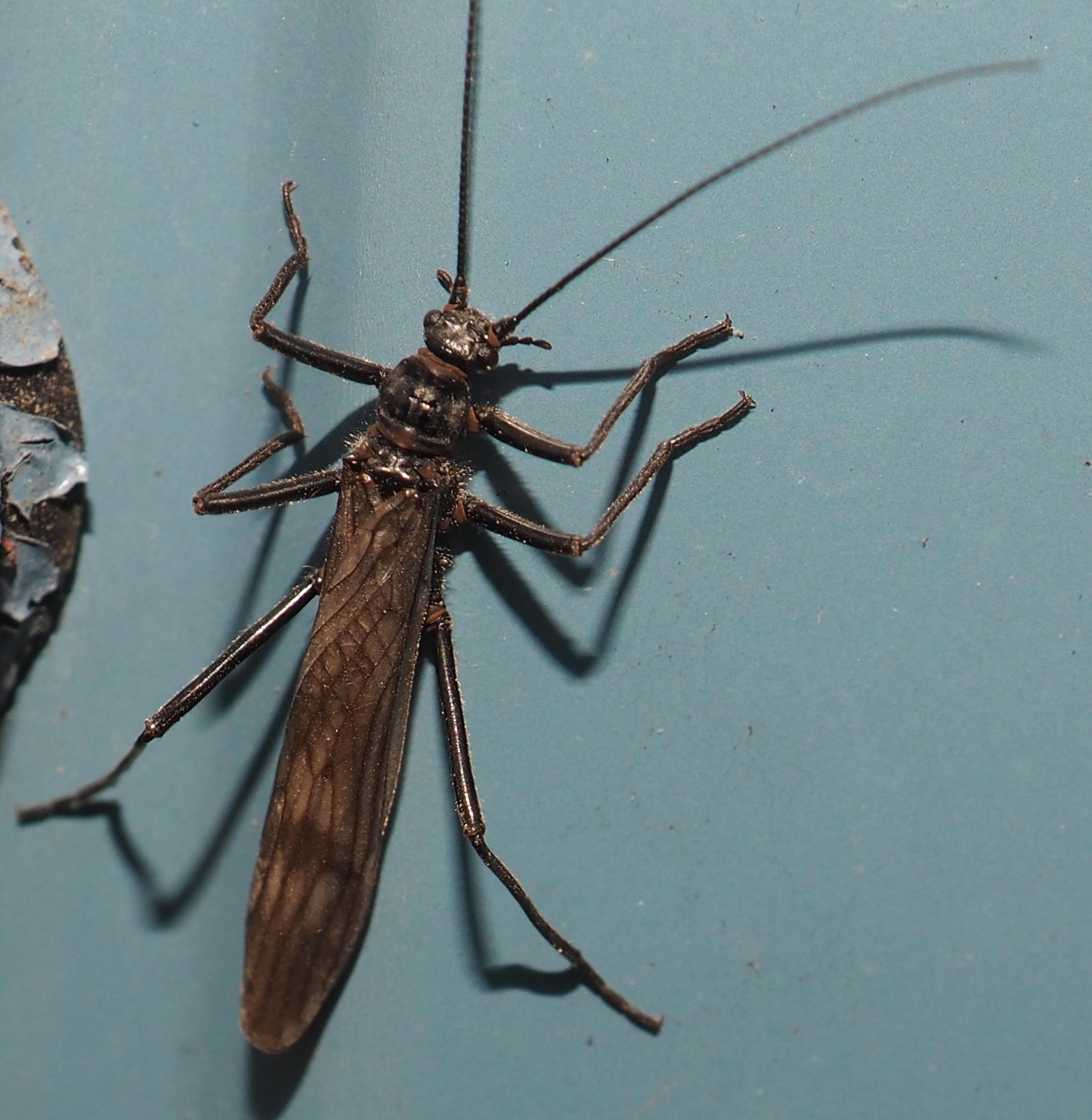
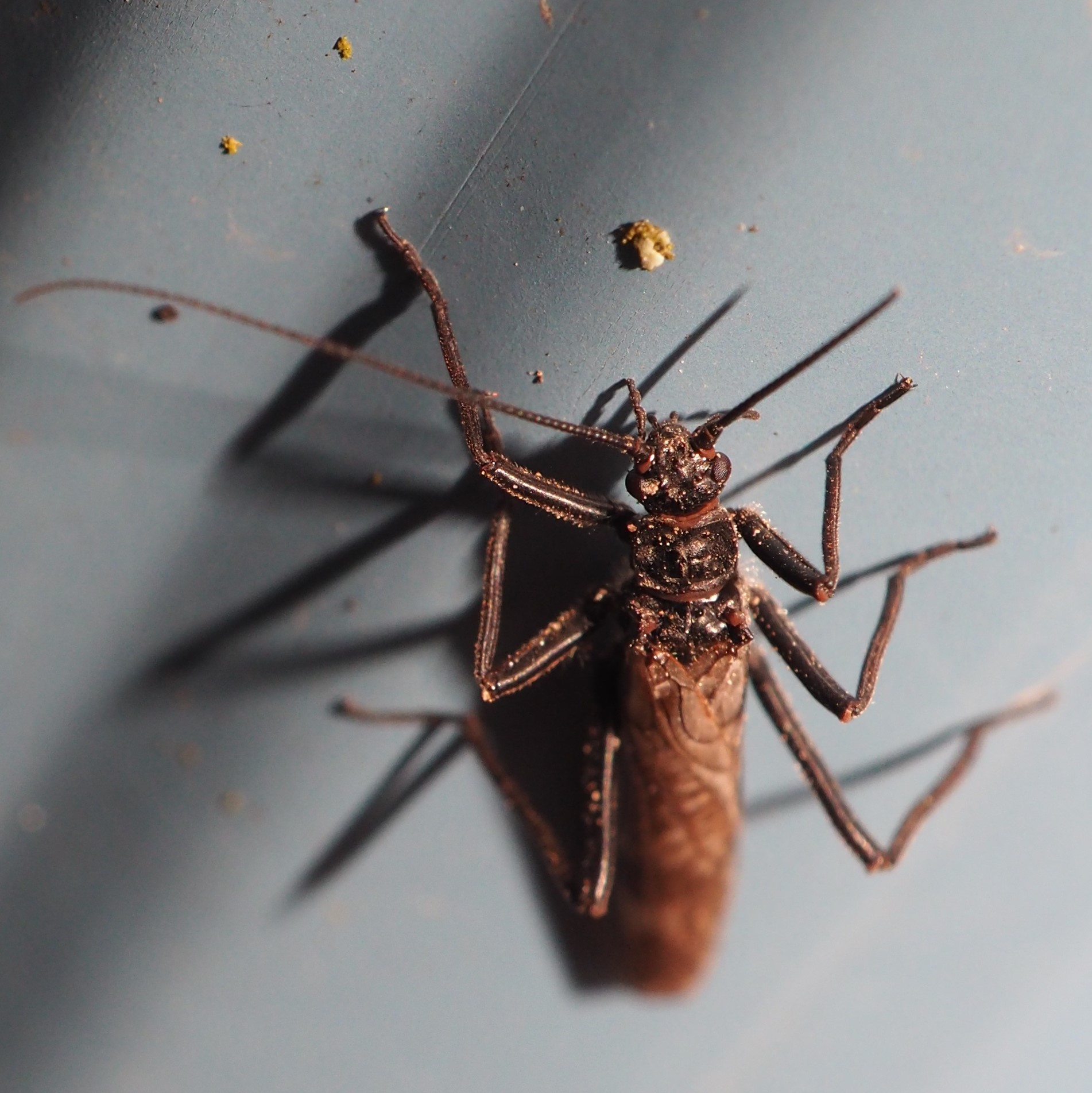
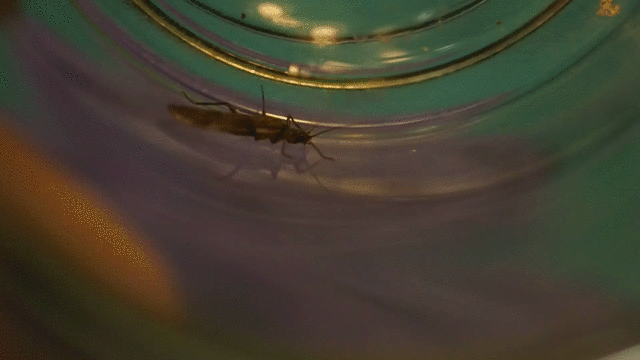
Today was a good day for new things. It's been a while since I saw a pillbug. This one was under a pile of leaves that I shoveled away with my hand. The second mystery was near the pillbug in the same photo.
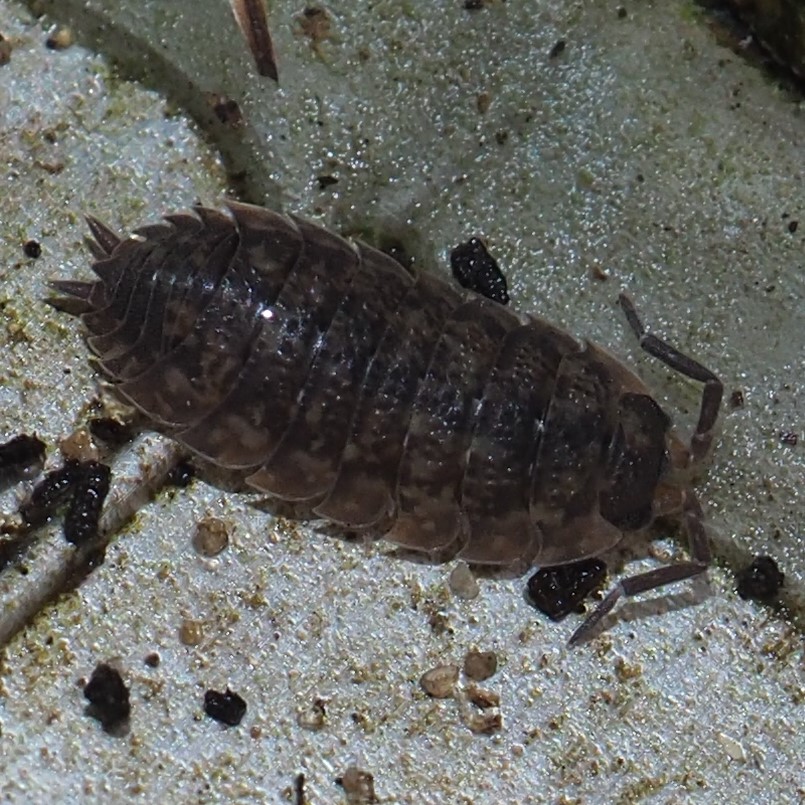

One more surprise. I had no idea what this creature (first two images) was, but it was up high enough for me to be able to shoot it without wreaking havoc on my knees. Surprise: it is a Springtail, which we see early in the Spring (no pun intended). They have six legs but are not Insects, but rather form their own group. Last year I found one but it was only a side view, and so I never got it properly identified. But today it got ID'd on BG as Tomocerus minor. I chased through a lot of photos, and now think thanks to some records at Bugguide.net that it is in fact a juvenile, since the adults are bluish. I hope to be able to follow it, though they spend most of their lives in the earth.
The second creature may in fact also be a Springtail of the genus Tomocerus. We must just hope to see it again.
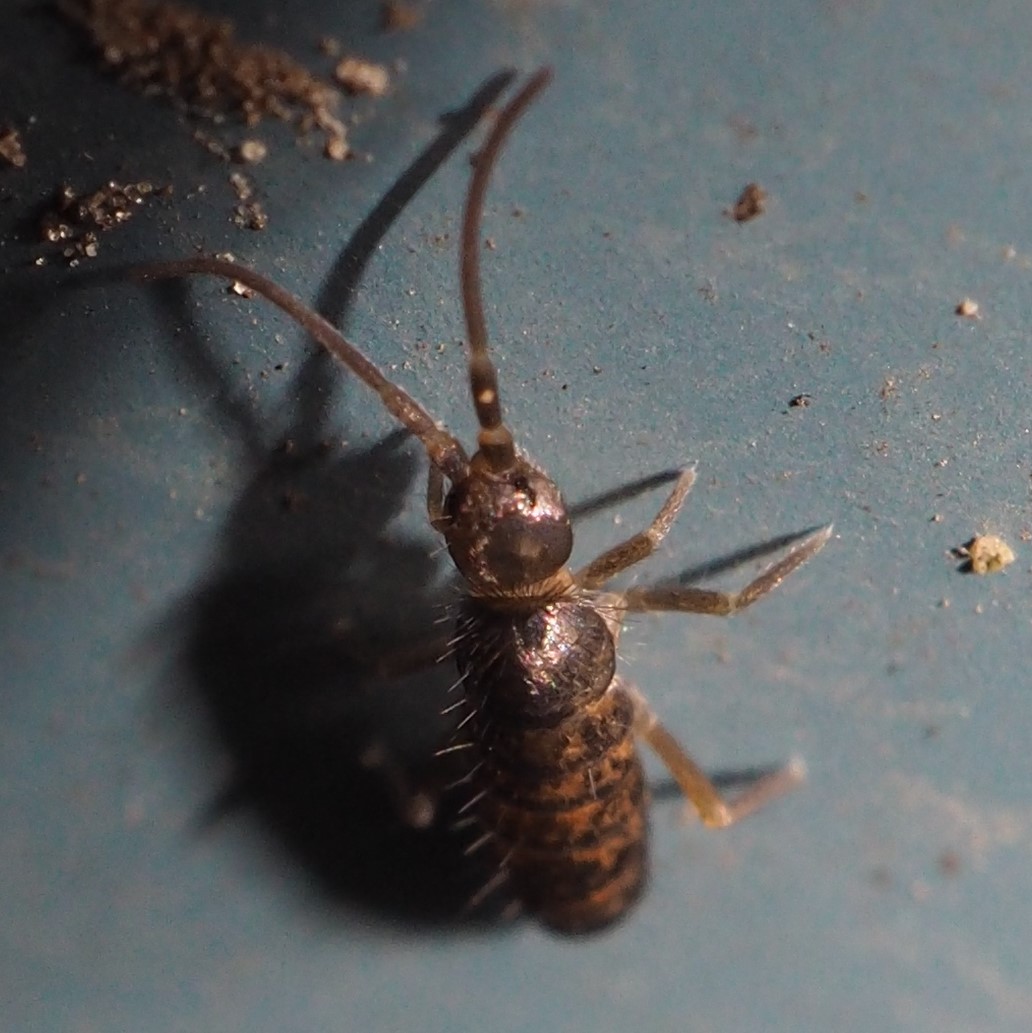
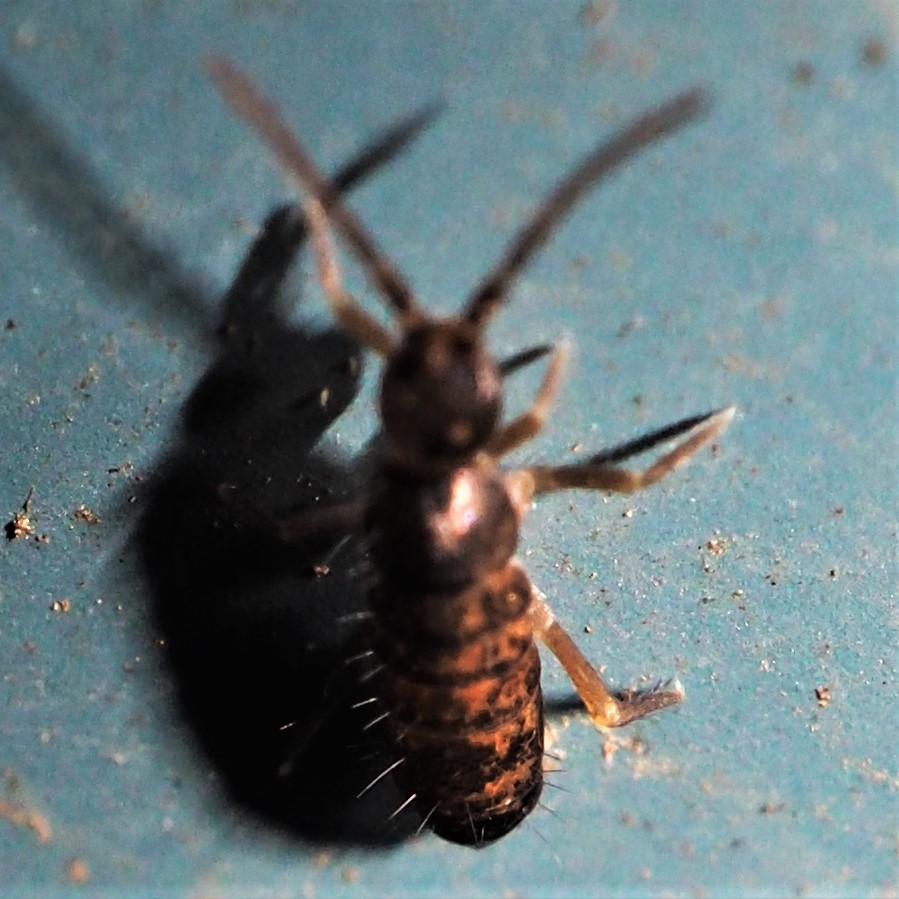
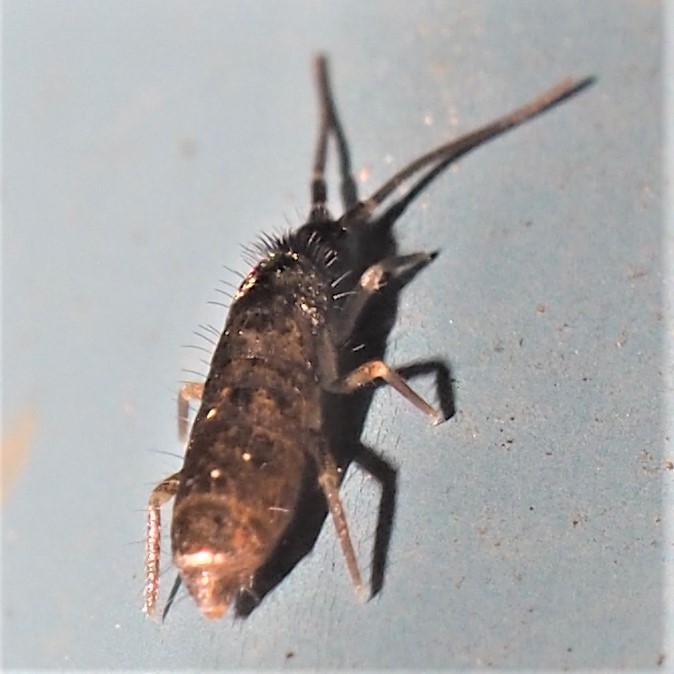
The fishes seem to be a bit more active, spending a little time out from under the heater. Here are Pinky, Whitey, two former red and black tortoiseshells, and one of the younger bluish fishes. The second image shows one of the water lily plants beginning to send out lily leaves.
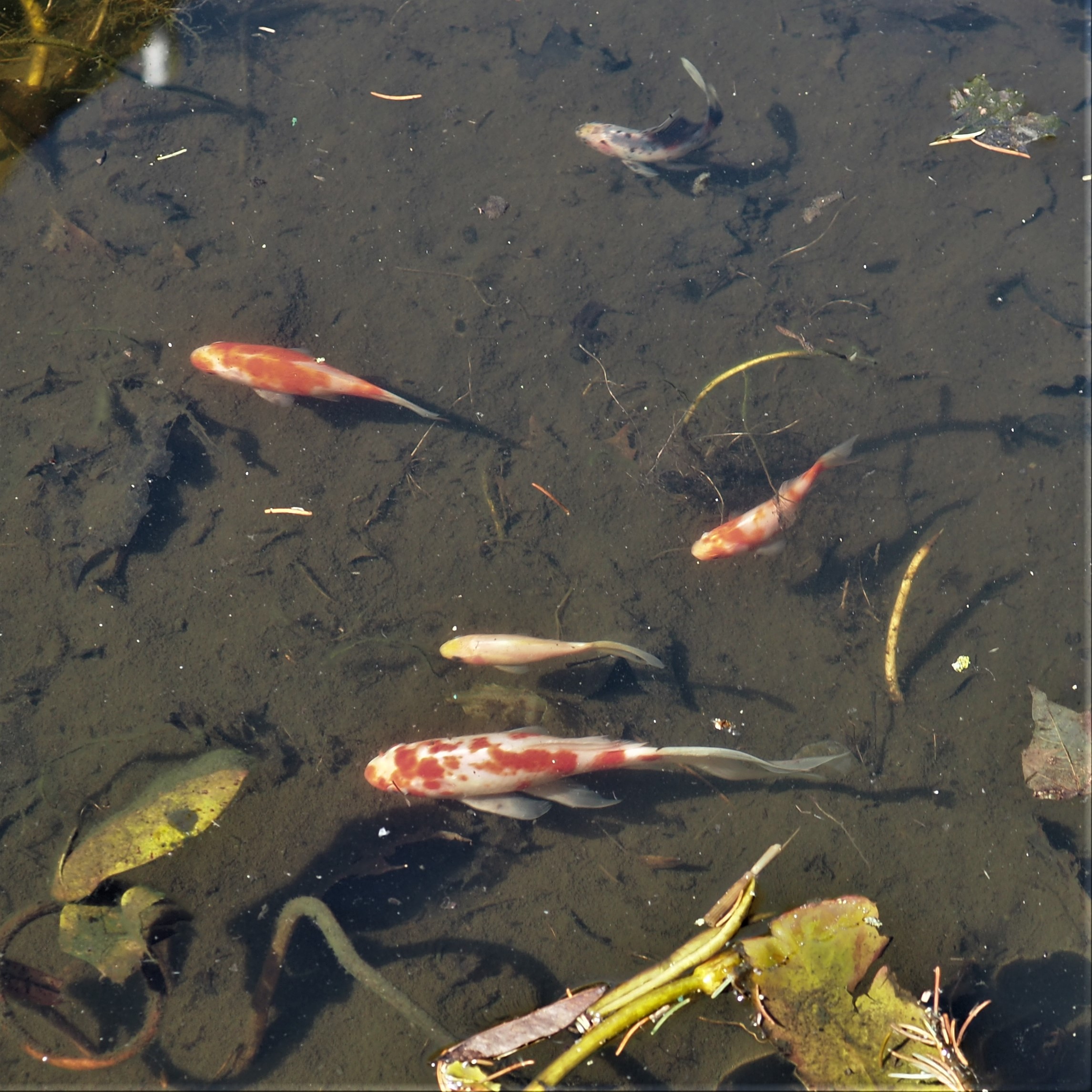
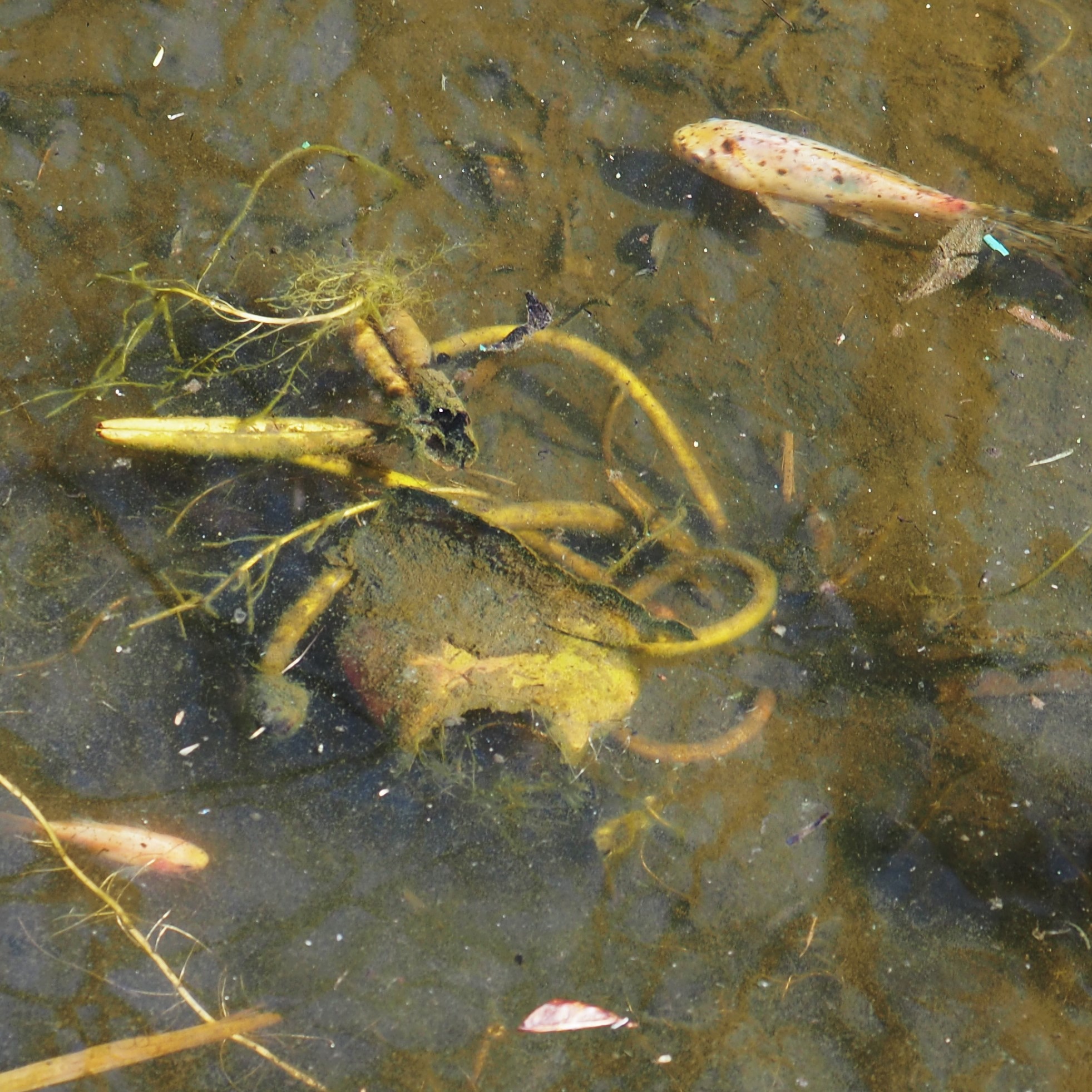
Let's see, what other harbingers of Spring have we had around here this week? The raspberries are setting buds. The youngish maple at the corner is budding too. Image 3 shows a few of the early buds. The curly leaves of Golden Wood Poppies (Celandines to some) are bursting now and soon we'll be seeing the bright golden flowers in the boundaries of the woods. Thanks to my old friend Mary Ann from Potsdam for the start of a dynasty.
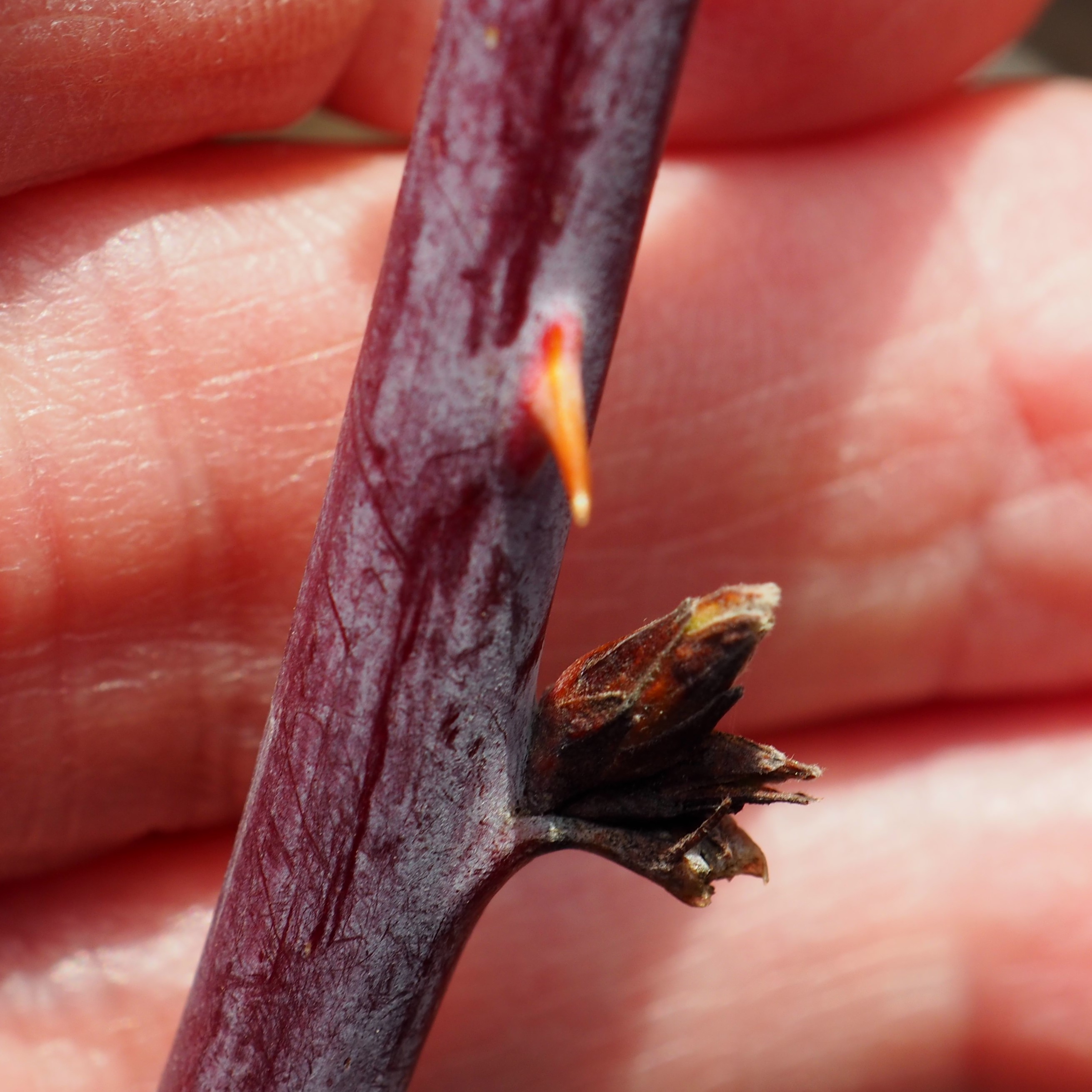
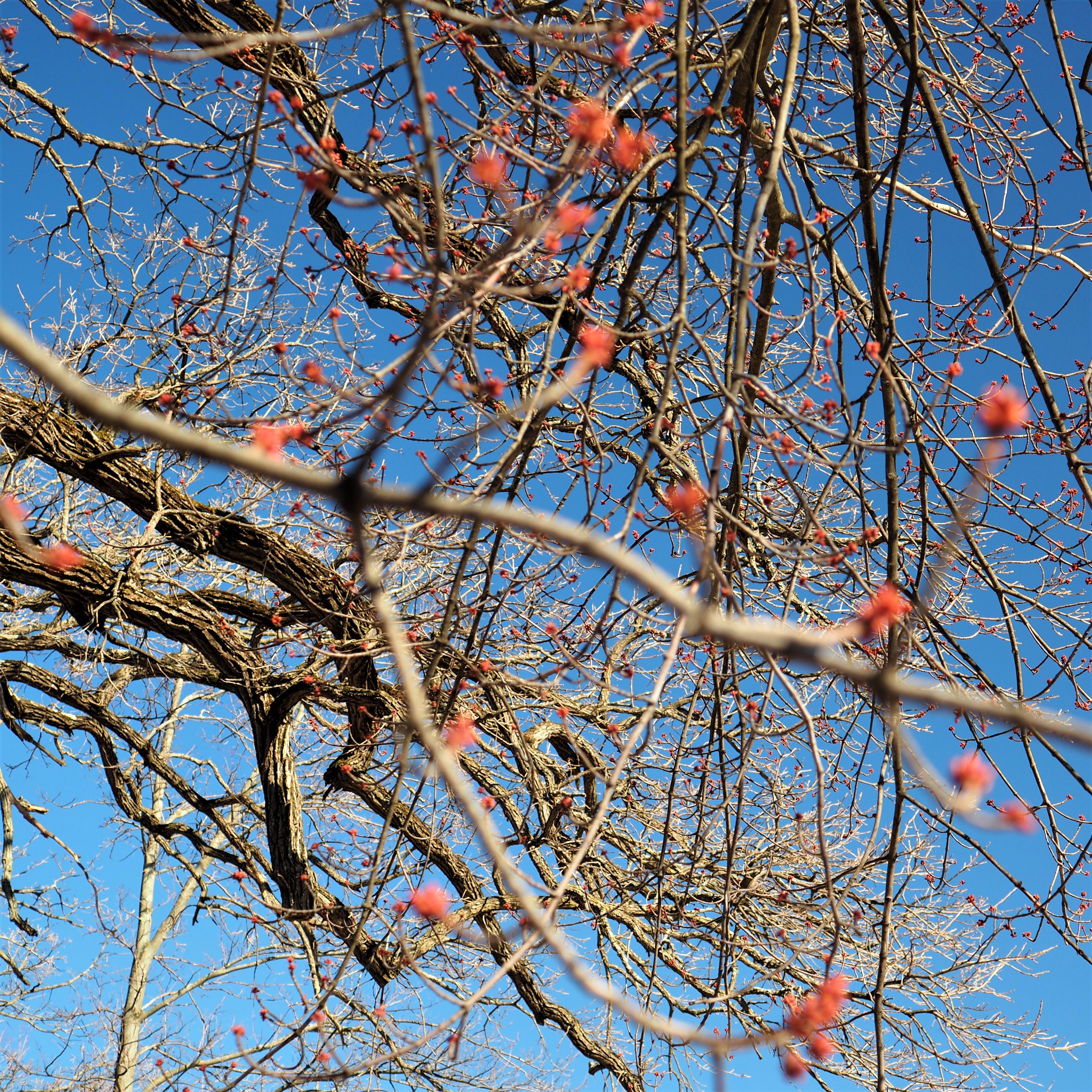

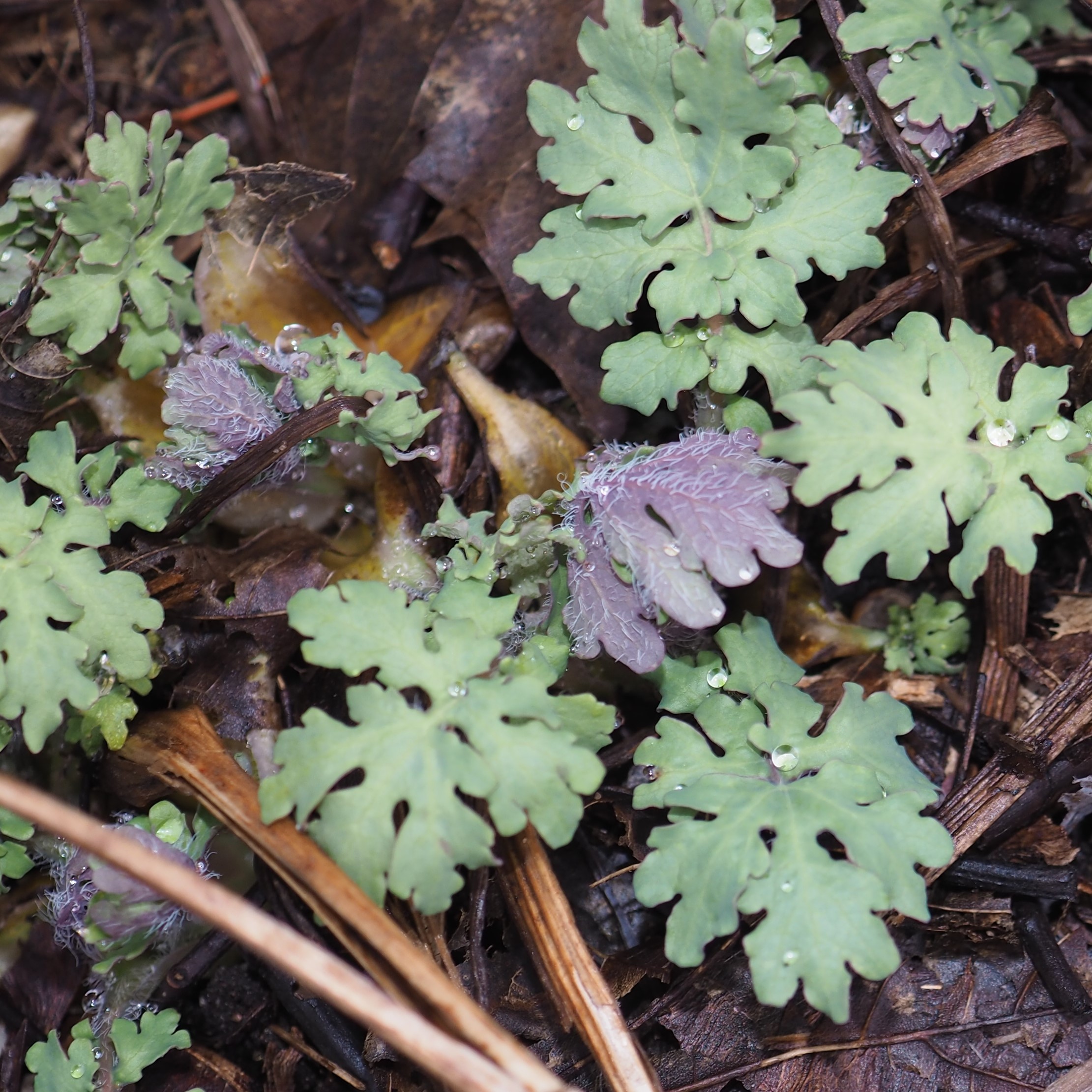
It was a long week. I should probably be complaining about the new extra load of cropping, but I'm just so glad to see some old friends and some new ones. I hope all of you have something to do that keeps you from going raving mad! Or is this what raving mad IS?
Love, Martha
Back to March 24, 2019
Forward to April 7, 2019
Back to main menu
copyright Martha O'Kennon 2019



























































